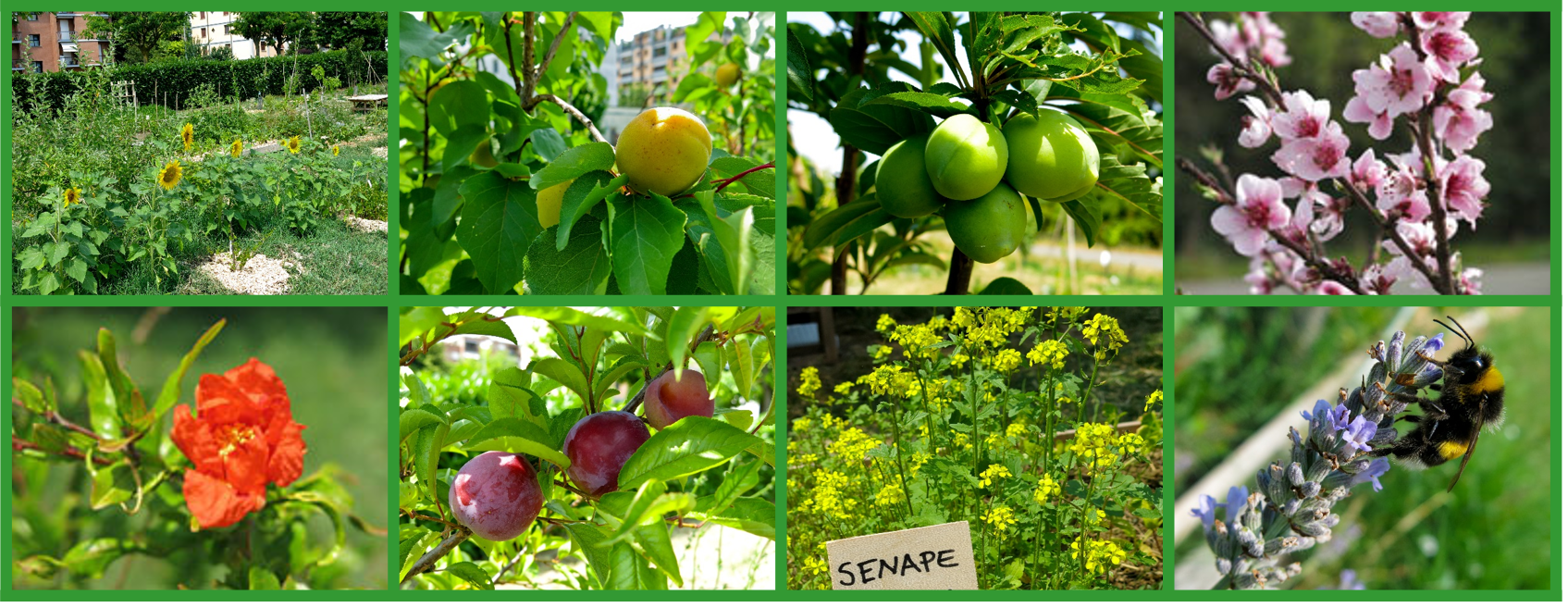
FRUTTORTI DI PARMA
Orti e frutteti condivisi nei quartieri cittadini

Raised beds and other experiments
- Trials 2014: Nursery, Buckwheat, Heirloom wheat, Azuki beans, Lentils, Yacon, Jerusalem artichokes, Sweet potatoes, Oca, Asparagus, Soy, Amaranth, Quinoa, Flax, White mustard, Solanacaee , Potatoes under the cardboard, HugelKultur, Shiitake mushrooms
Besides the area dedicated to the food forest several other small agronomic trials are carried over in raised beds or small plots between the young trees in the Picasso Food Forest. In particular, 10 raised beds were built during the winter 2014 to:
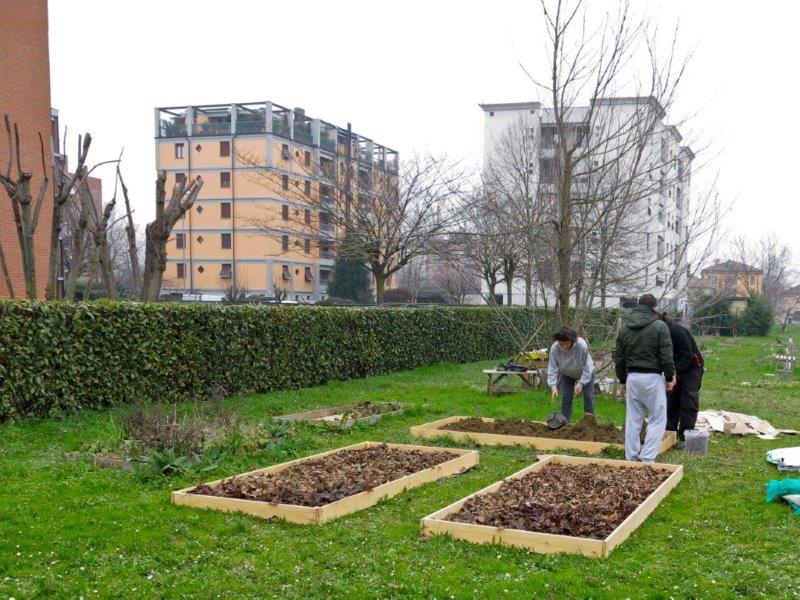
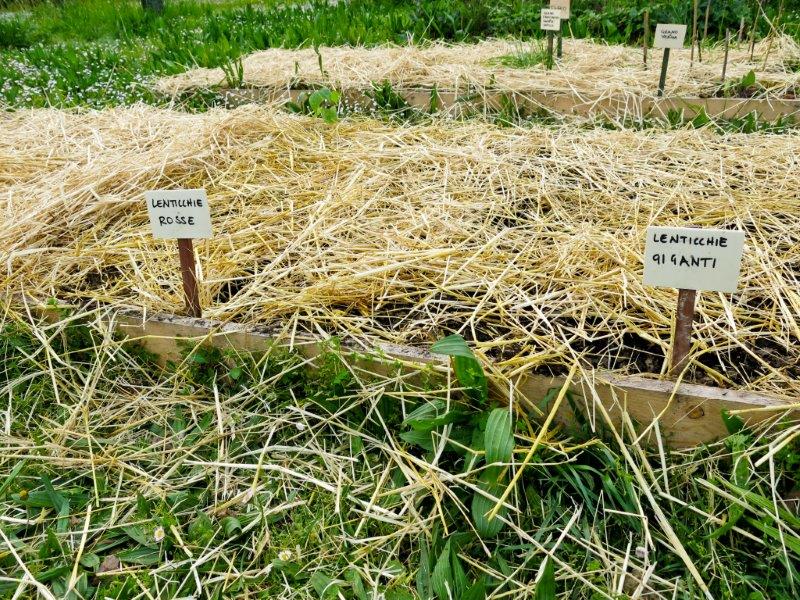
- Experiment with unusual varieties of beans, tubers, old varieties of cereals and with pseudo-cereals focusing on the production of calories, proteins and nutritional values.
- Have a nursery space to propagate plants to be established in the food forest
- Have an educational garden where it is possible to held activities and laboratories with adults and children
The raised beds are made up of four wooden plies and measure 1.2 x 2 x 0.15 meters. They were filled with dirt obtained from a nearby construction area to which a small amount of mature manure was added and covered with a mulch of straw.
While evaluating the results we need to keep into consideration the poor starting quality of the soil used to build the raised bed, something we are working on to improve by increasing the content of organic matter and the health of the soil ecosystem.
We publish here all the results obtained, documented by photos, and we invite you to write us for questions or suggestions!
Trials 2014:
Raised bed 1: Nursery for the propagation of strawberries, borage, Lemon balm and raspberries.
This bed has become almost self-sufficient and it only requires minimal irrigation and weeding. Wood strawberries have covered the surface of the bed. Borage, Lemon balm and raspberries grow healthy above them.
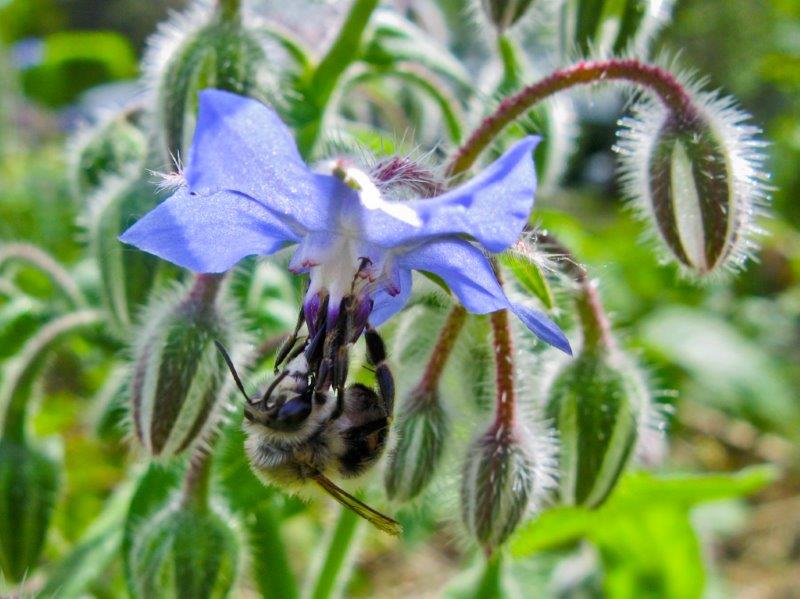
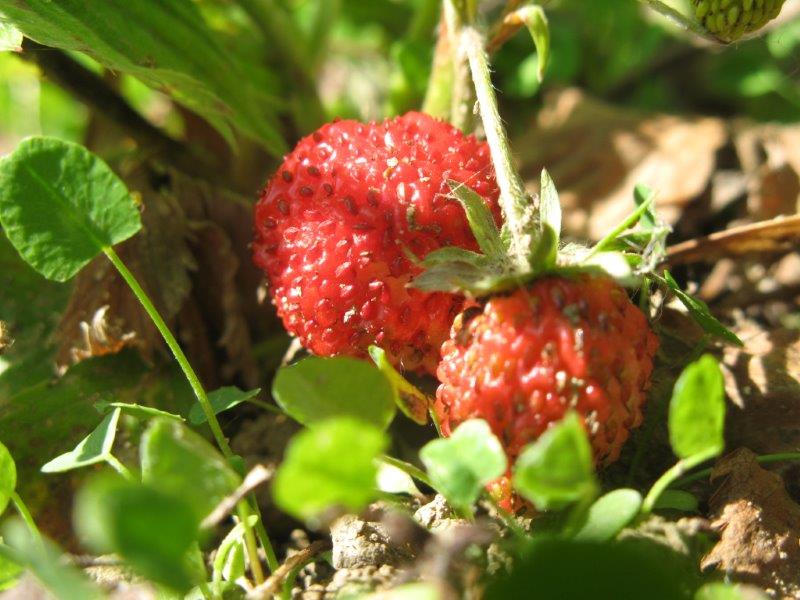
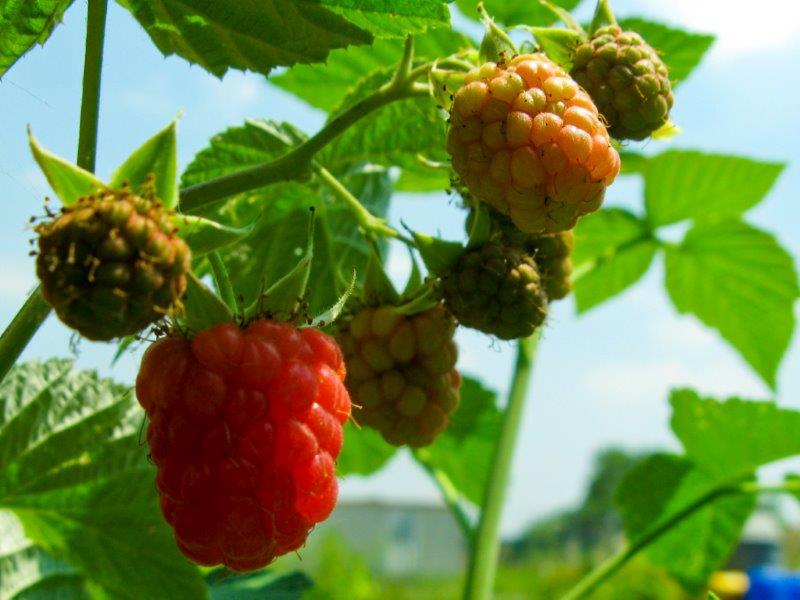
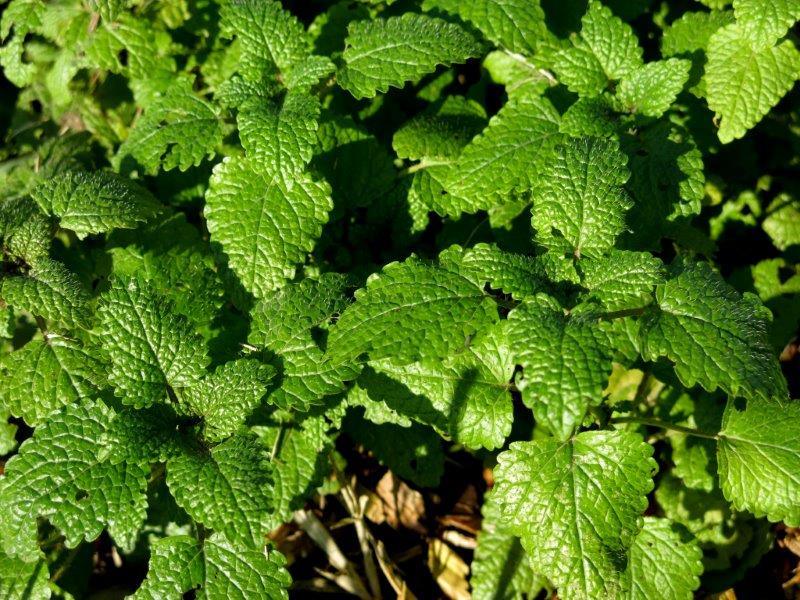
From left to right: 1) Borage (Borago officinalis), 2) Wood strawberries (Fragaria vesca), 3) Raspberries (Rubus idaeus), 4) Lemmon balm (Melissa officinalis)
Raised bed 2a: Buckwheat (Fagopyrum esculentum)
The buckwheat grew without issues but plants were sown too sparsely. Seeds were sown broadcasted at the beginning of May and harvest was performed on the 20th of July when most seeds had turned to a dark color. From 1 square meter bed 46 grams of whole seeds were harvested.
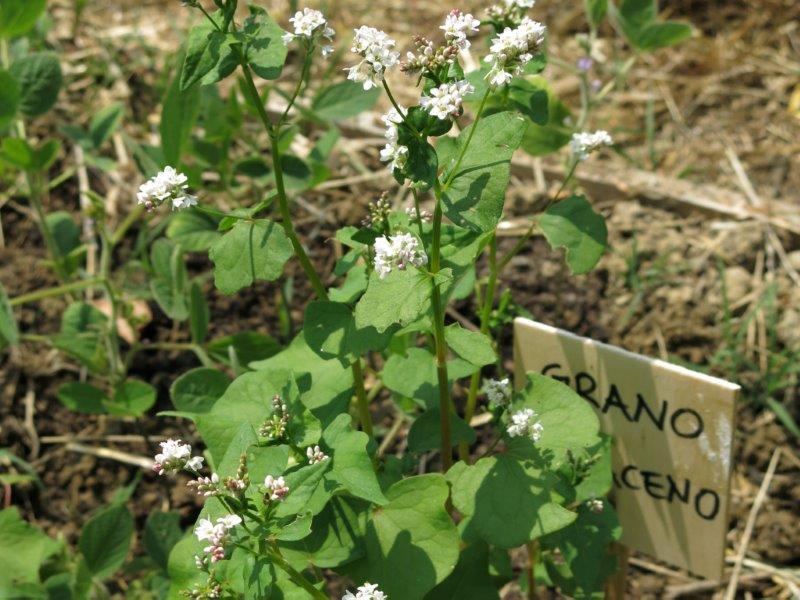
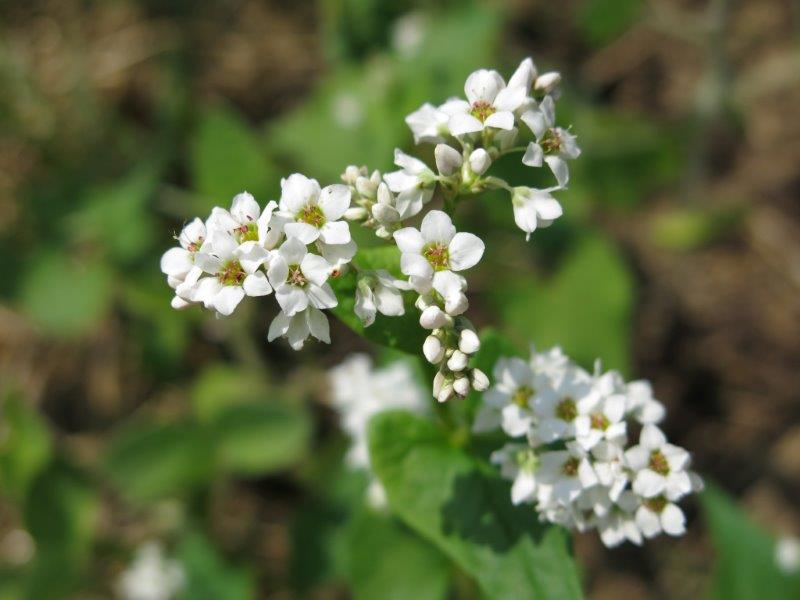
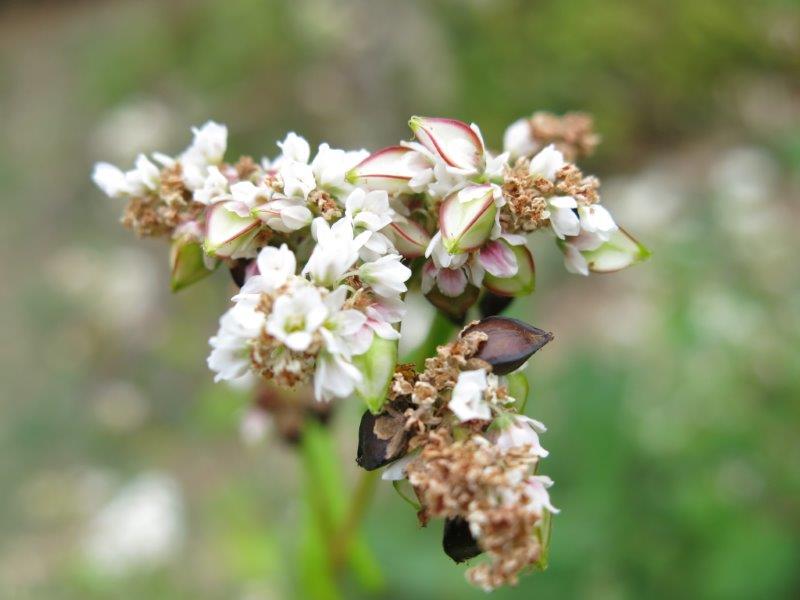
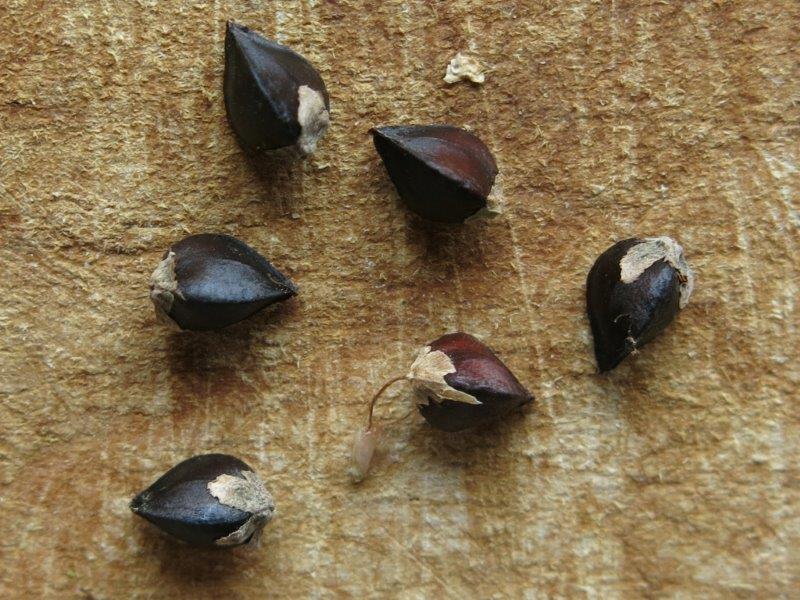
From left to right: 1) young plants of buckwheat (7 June), 2) Detail of the flowers, 3) Flowers, ripe and unripe fruits 4) Detail of the fruits/seeds harvested on the 20th of July
Raised bed 2b and heirloom cereal experimental plot (Frassineto and Verna wheat, oat, rye and spelt)
The main old variety cereal trial was set up on a 2 square meters plot. The seeds were sown in November almost on sod (a light hoe work over the original grass). The seeds did not germinate in November so we thought the experiment failed and we did not follow up on the plot. The next spring, the grass that grew on the area was hand mowed with a sickle. Seeing the strong regrowth of Poaceae grasses we doubted it could have been the wheat sown last November. And this turned to be true. The eras of the plants that flowered and then went to seed were harvested with a sickle on the 19th of July. 380 grams of seeds were obtained. Unfortunately the label indicating the variety was lost so we don’t know which of the varieties we harvested.
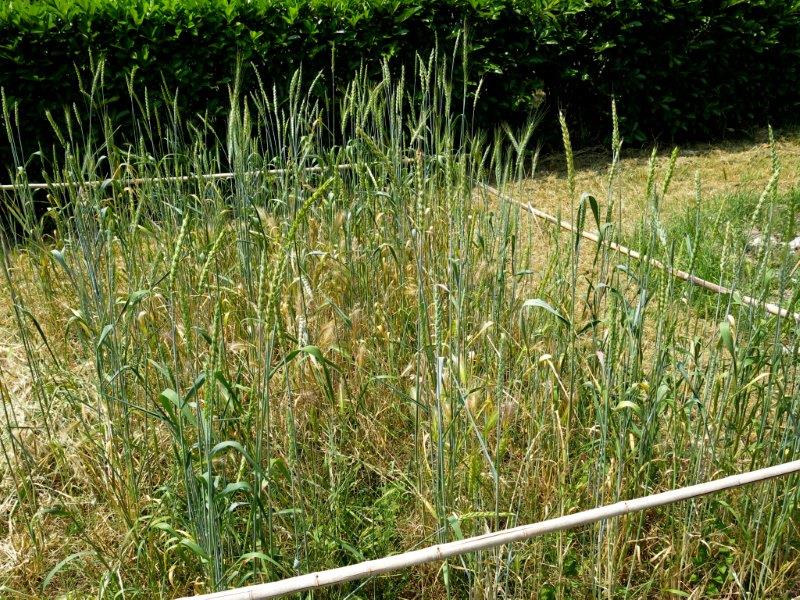
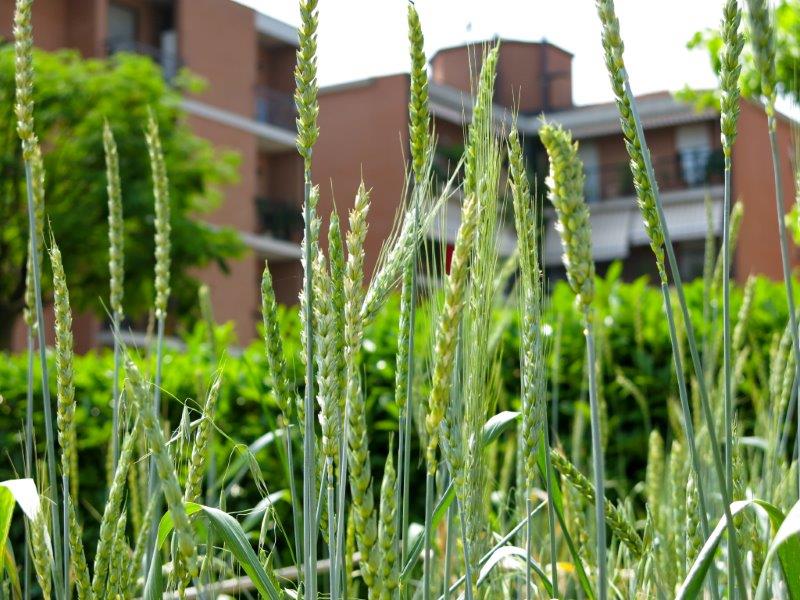
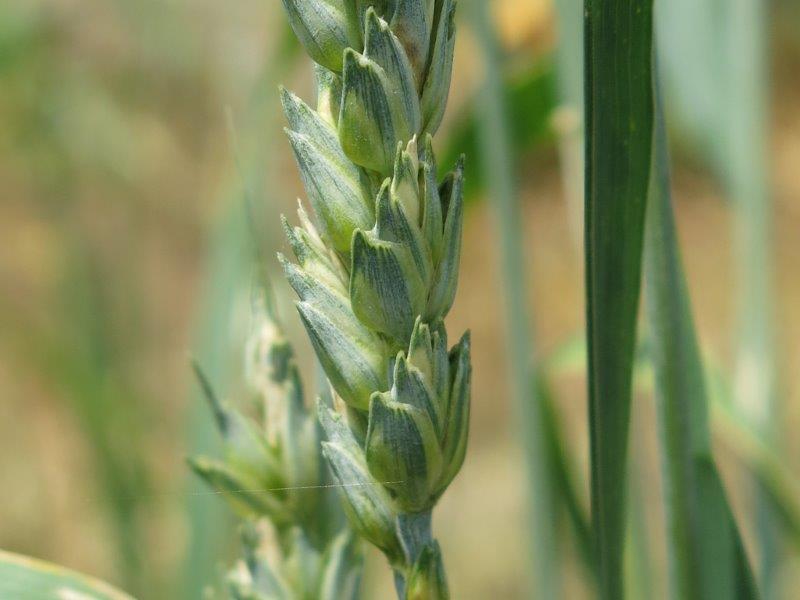
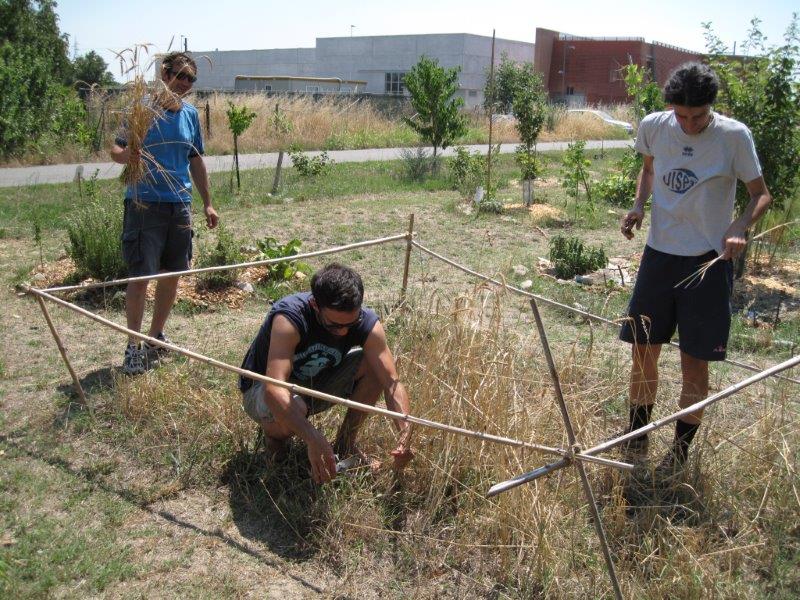
From left to right: 1) Heirloom wheat experimental plot (Triticum aestivum) as it looked on the 7th of June, grown back after the mowing in spring, 2) Detail of the ears, 3) Detail of the caryopsis 4) Hand harvest with the help of a small sickle and preparation of the sheaves (19th of July ).
Besides the main plot few seeds of 5 different types of cereals (Frassineto and Verna wheat, oat, rye and spelt) were sown in 10cm wide pots in November and transplanted in the raised bed in spring. From this trials we harvested 10 gr of Frassineto wheat and 6 gr of Verna wheat used for the 2014 autumn sowing.
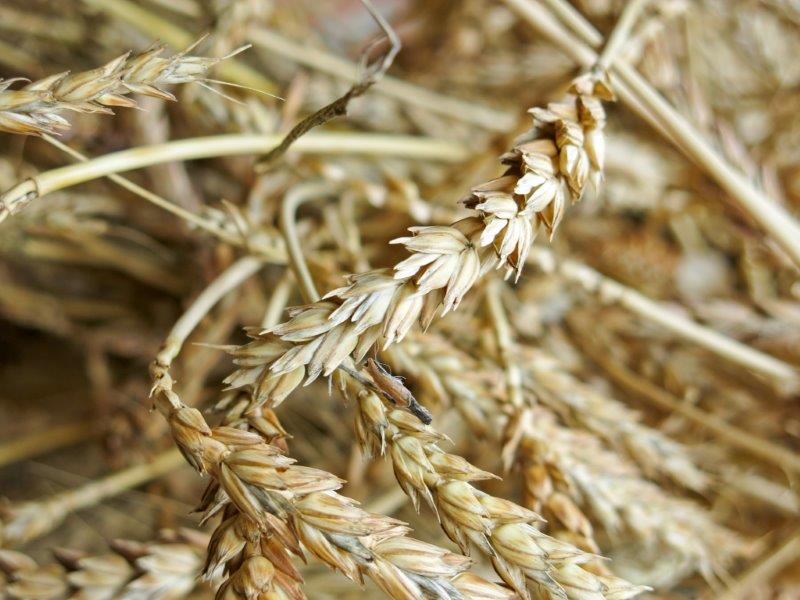
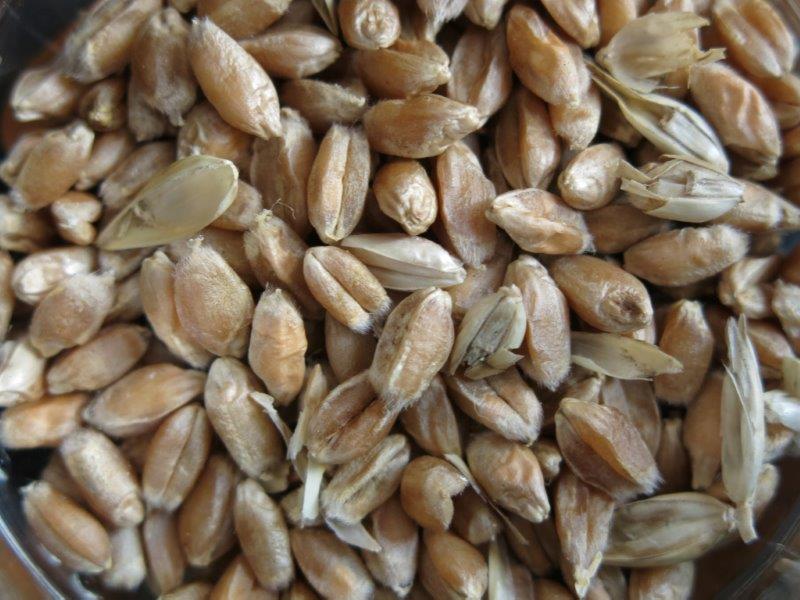
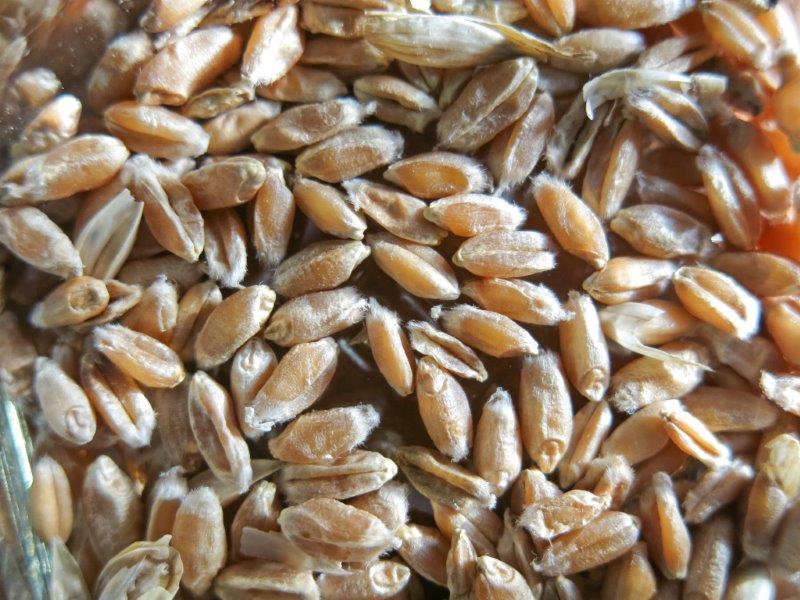
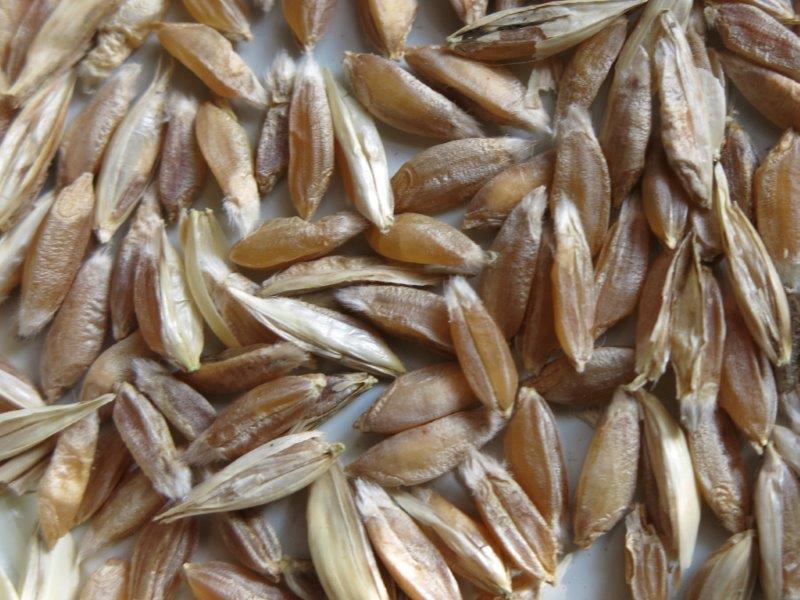
From left to right: 1) Sheaves, 2) Grains of heirloom variety "Frassineto", 3) Grains of heirloom variety "Verna" 4) Grains of spelt (Triticum dicoccum)
Raised bed 3a: Green and red Azuki beans (Vigna angularis)
We sowed green and red Azuki beans in the first half of April. Seeds germinated quickly but the plants started to develop only at the beginning of summer so we believe sowing should happen much later for these legumes. Harvest was prolonged as beans matured during the whole summer and part of the autumn. The average productivity for these type of beans is around 100 gr per square meter. We harvested 40 gr of beans from 1 square meter along the season. We will repeat the trial with a later sowing next year.
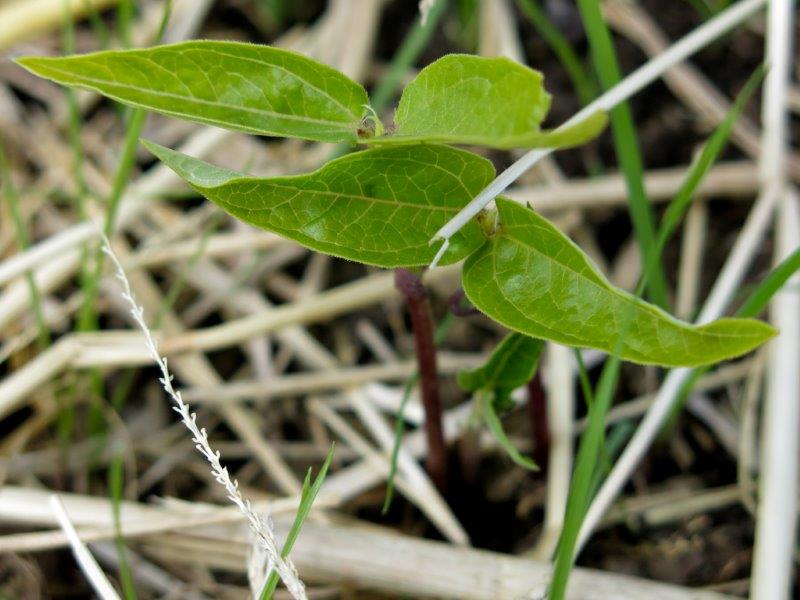
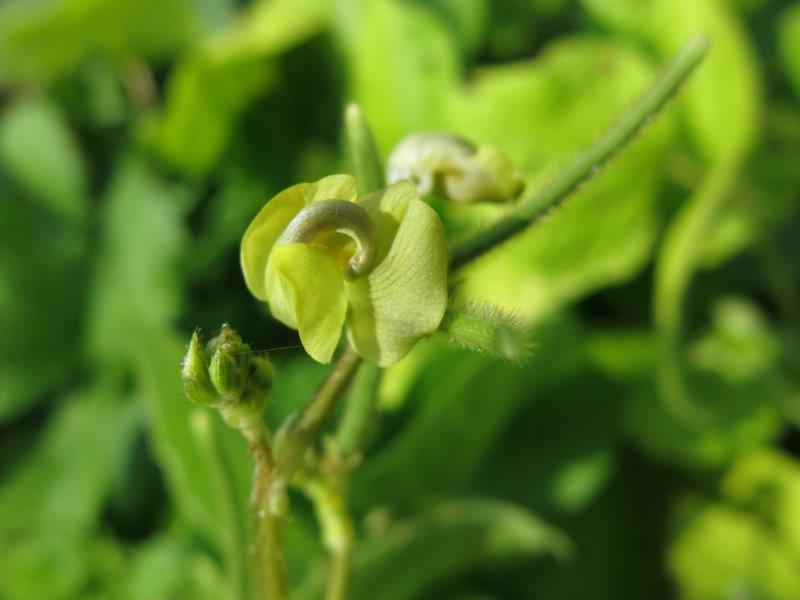
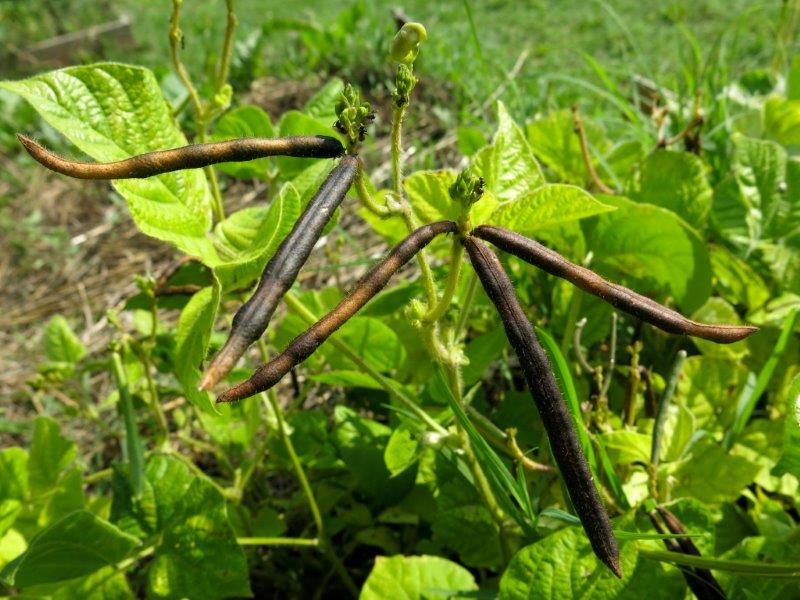
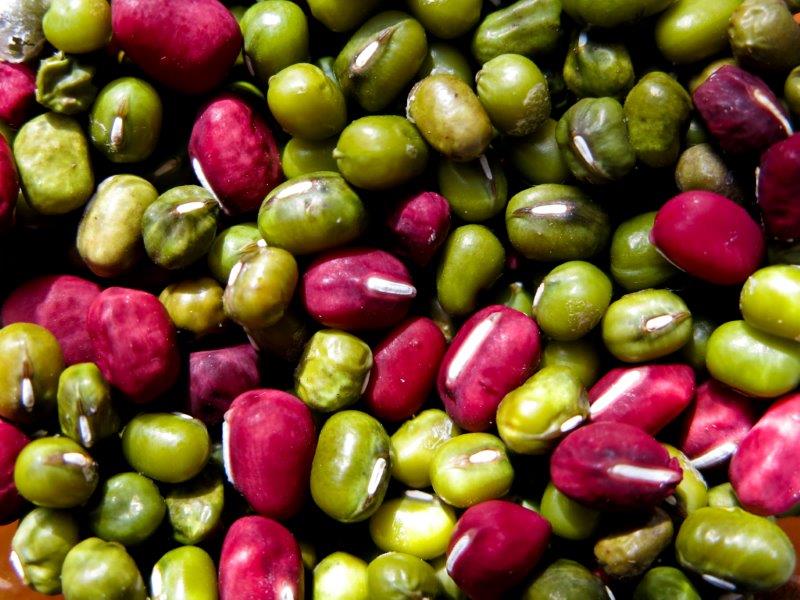
From left to right: 1) Seedlings emerge from the mulch (20 April), 2) Detail of the flower and young pods, 3) Mature pods on the 2nd of August, 4) Azuki red and green beans
Raised bed 3b: Red and giant lentils
Lentils trial was quite successful though hand threshing was very laborious. Lentils were sown in April. The first flowers appeared at the beginning of June and pods were harvested on the 20th of June. We collected 140 grams of seeds from 1 square meter bed that is above documented average productivity (90 gr / square meter)
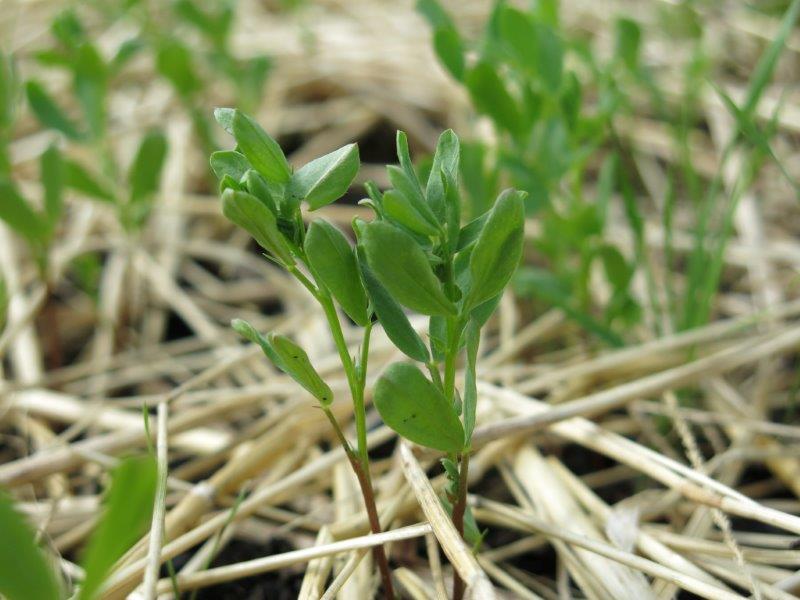
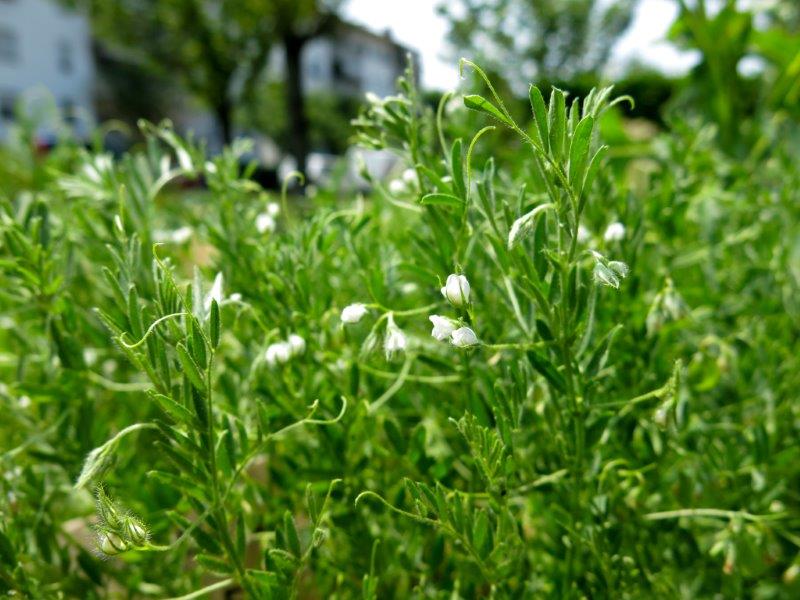
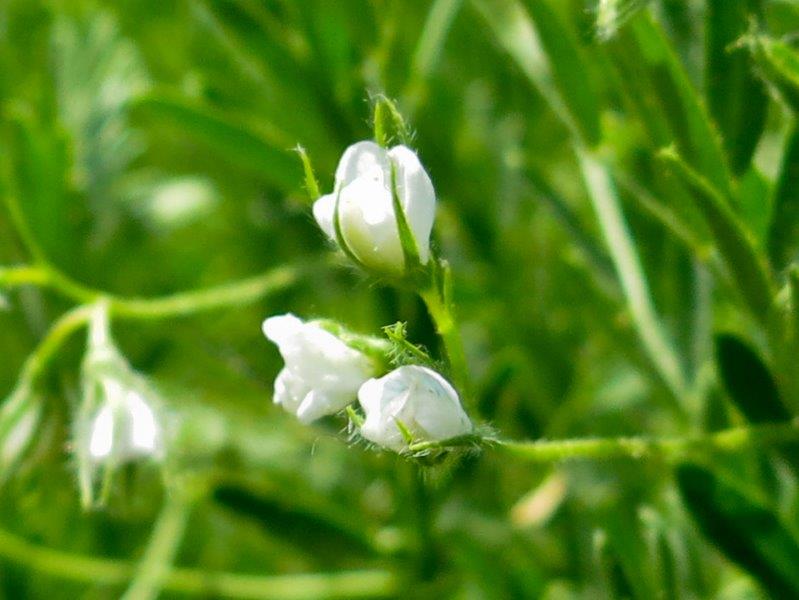
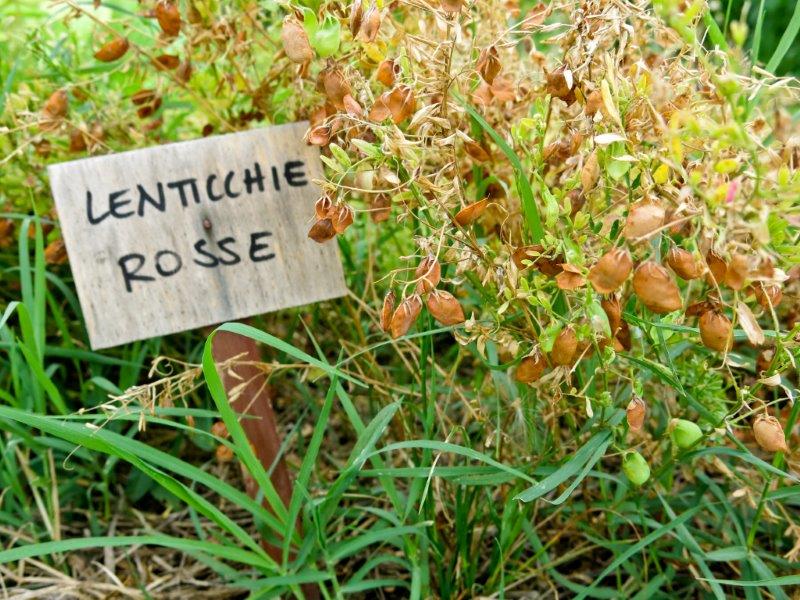
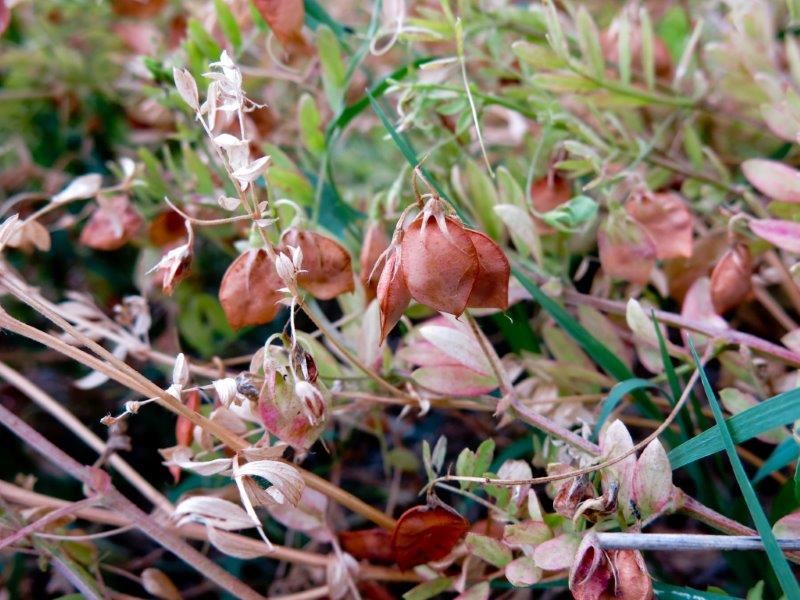
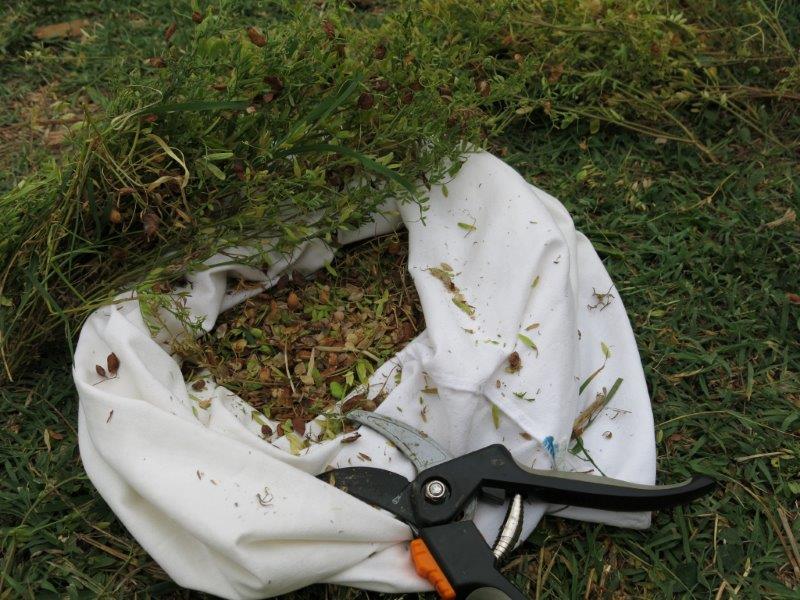
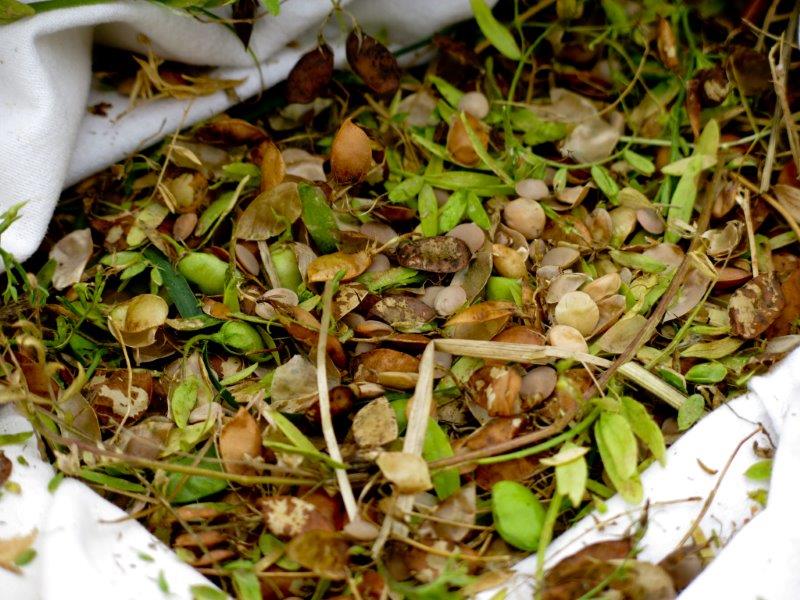
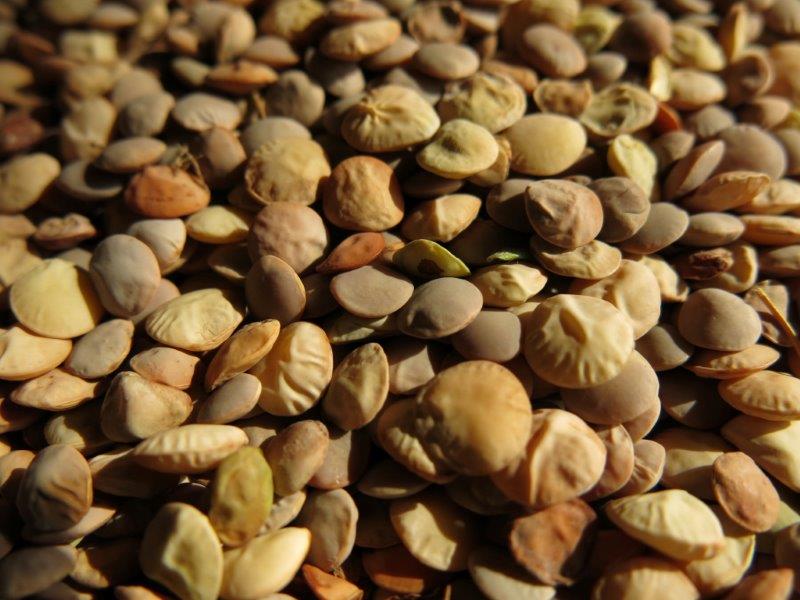
From left to right: 1) Seedlings emerge from the mulch (20 April), 2) Blooming on the first decade of June, 3) Detail of the flower, 4) Mature pods 5) Detail of the pods, 6) Hand harvest, 7) Seed pods in the pillow case ready to be threshed, 8) Cleaned seeds
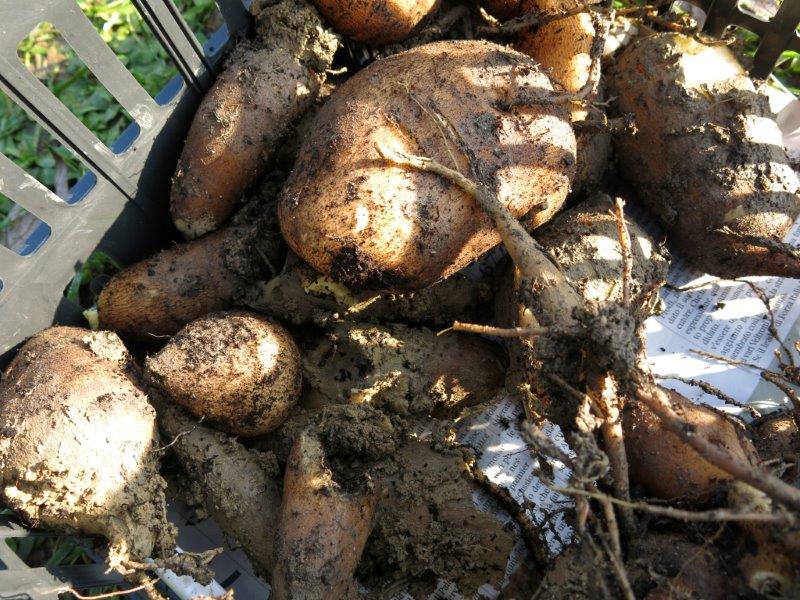
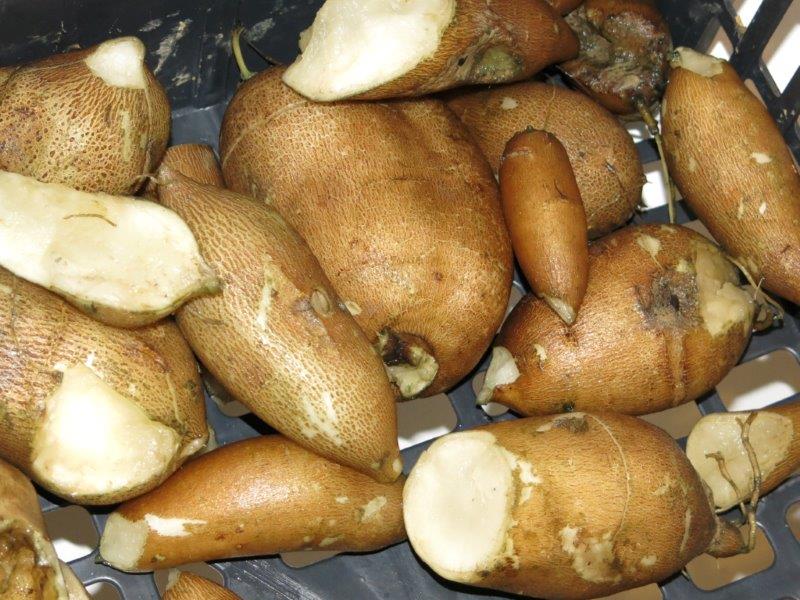
Raised bed 4a: Yacon (Smallanthus sonchifolius)
Three Yacon crowns sprouted indoor were transplanted in the raised bed at the end of March. The plants developed very slowly and got stuck at the height of about 50 cm (far from the 2 meters normally reached by these plants). Plants and leaves showed heat and/or water lack stress during the summer (leaves shriveled during the hottest part of the day). We harvested 1.5 kg of tubers from the 3 plants that occupied 1 square meter of the bed. Harvest was a little difficult because tubers easily broke split as soon as pressure was put to extract them from the clay. The plant was new to us and neverthless the scarse harvest it turned to be a great discovery as far as taste is involved. Crispy, juicy and fresh, when raw yacon makes a great addition to all sorts of salads. It also stores better than other tubers. Crowns were stored in wet sand and will be planted out again next year.
Raised bed 4b: Jerusalem artichoke (Helianthus tuberosus)
The tubers were planted at the end of March and sprouted at the beginning of April. The plants developed slowly but healthy at the beginning and then took off at the end of summer and flowered in autumn as expected. Tubers were harvested in two sessions in December and January for a total of 7 Kg from 1 sq meter bed. Digging out the tubers from the heavy clay soil and cleaning them was a bit laborious. Tubers were washed and brushed in a bath tub. Tubers are difficult to store as they tend to soften quickly even if kept cool conditions. Perfect instead is their storage in the bed covered by mulch.
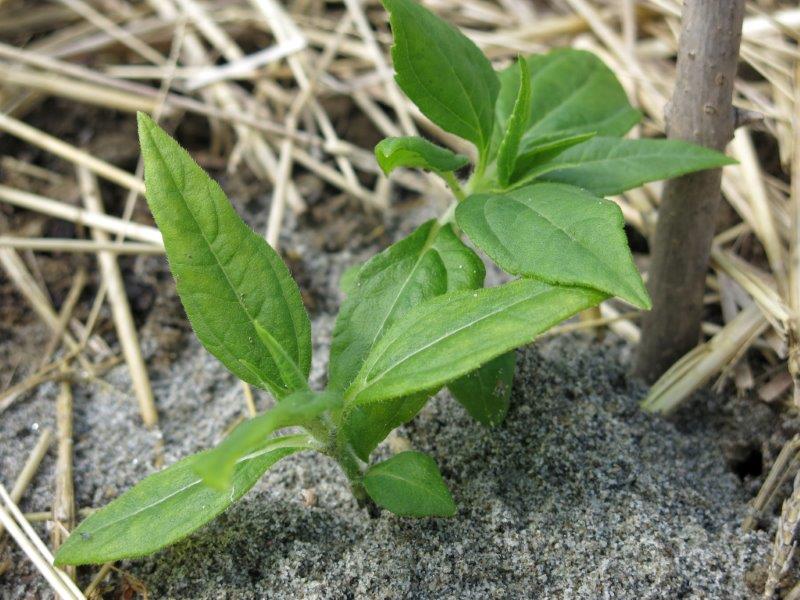
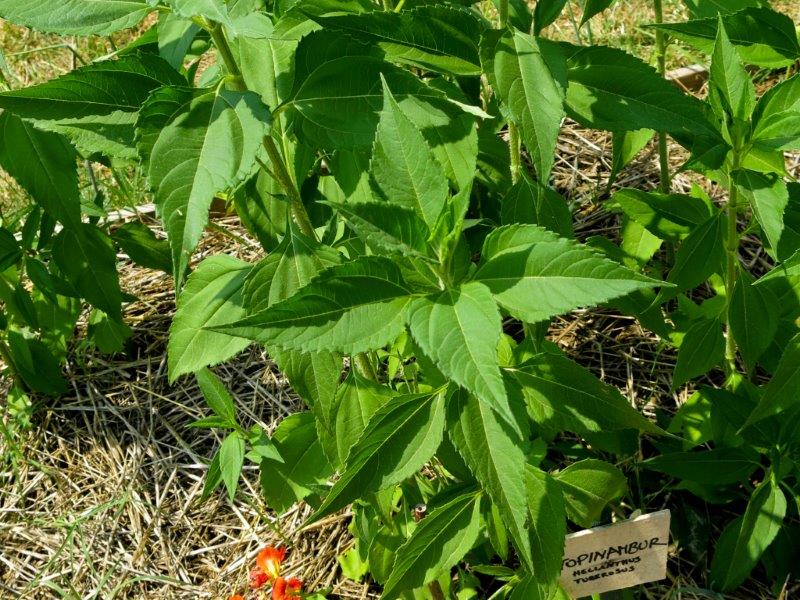
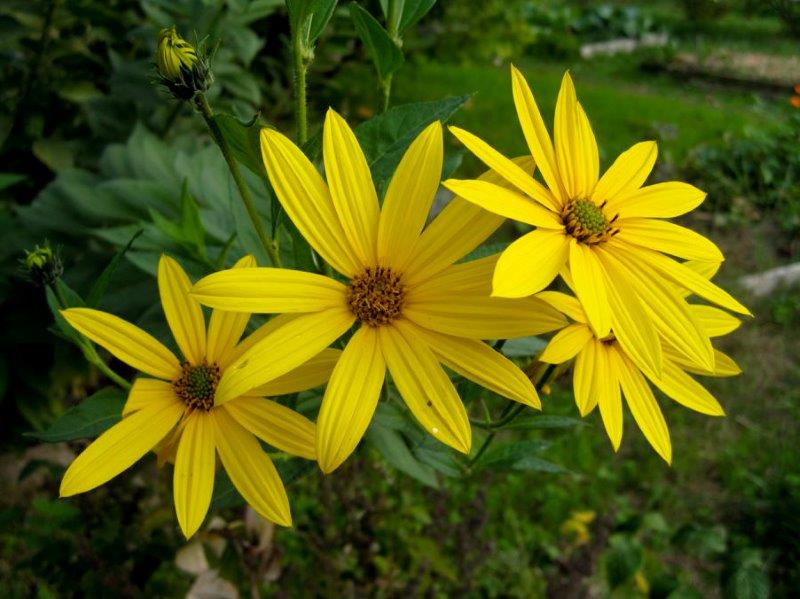
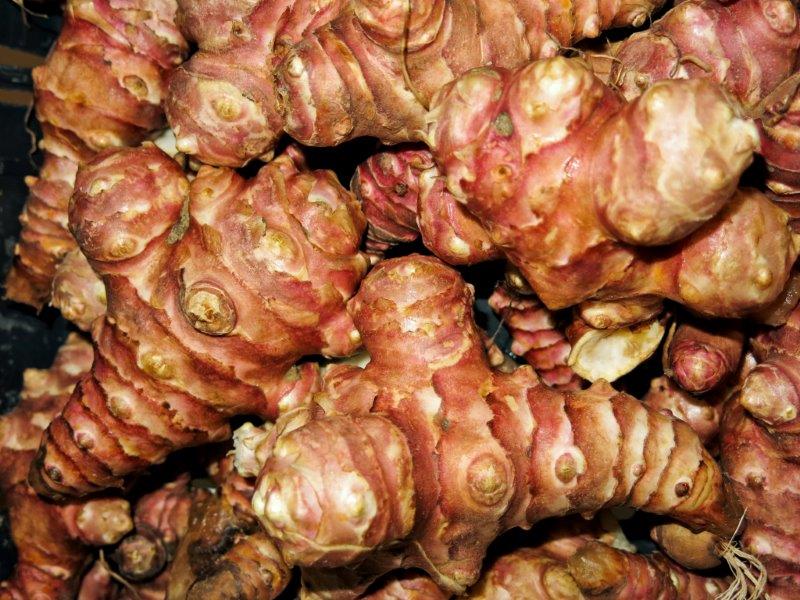
From left to right: 1) Seedlings emerge from mulch (20 April), 2) Plants on the 7th of June, 3) Flowers on the 19th of October, 4)Tubers harvested in January
Raised bed 5: Sweet potatoes (Ipomoea batatas) and Oca (Oxalis tuberosa)
The sweet potato tubers planted in March, although bought in an organic market did not sprouted well and the plant did not fully develop. We suspect the treatment with sprouting inhibitors. The very small tubers produced by unhealthy plants were easy prey of bugs.
The oca tubers did germinate but the plants did not develop and did not produce tubers. We don’t know if this was due to a wrong planting time (too early), lack of water, poor soil conditions or something else. We will repeat both trials next years.
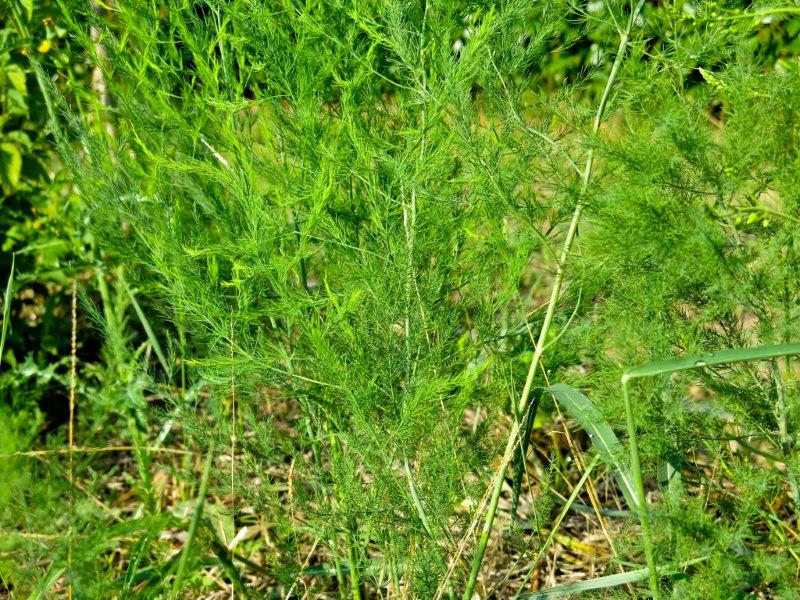
Raised bed 6: Asparagus bed for the production and propoagation of asparagus(Asparagus officinalis)
Ten asparagus crowns were planted in April at about 15 cm depth in a 2 square meters raised bed. No work was done on the bed beside sprinkling a bit of mature manure on the top of the bed. A plant obtained from seed sown in 2013 was also transplanted in the same bed. A number of thin sprouts emerged in spring and summer and developed into the typical fern type leaves. We will monitor the plant development also next year. We expect the bed to become productive starting from the 3rd year.
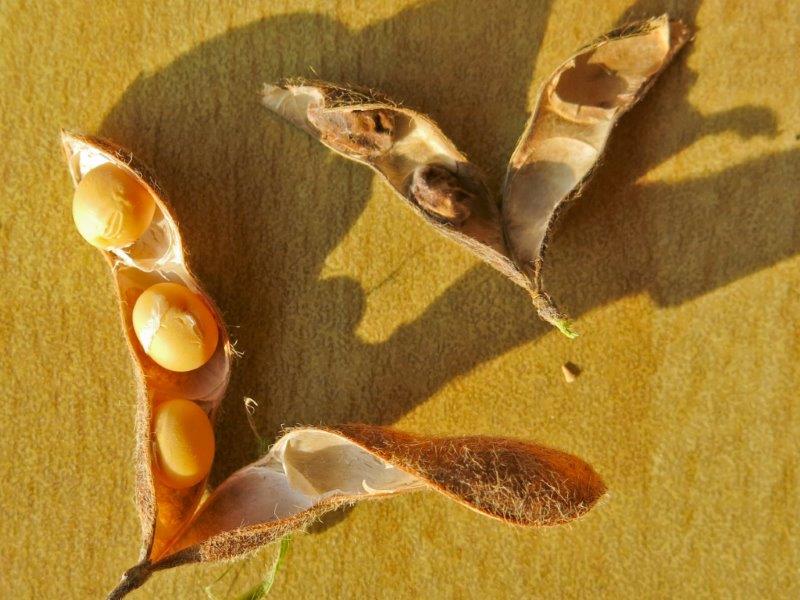
Raised bed 7: Soy (Glycine max)
Soy was planted in situ in mid-April. Seeds were inoculated with a Rhizobium japonicum solution; We harvested 308 grams of seeds from 2 sq meters bed. The plants produced a relatively large number of seed pods but many contained undeveloped or dark seeds as it can be seen in the picture on the right comparing a healthy pod with one in which seeds did not develop.
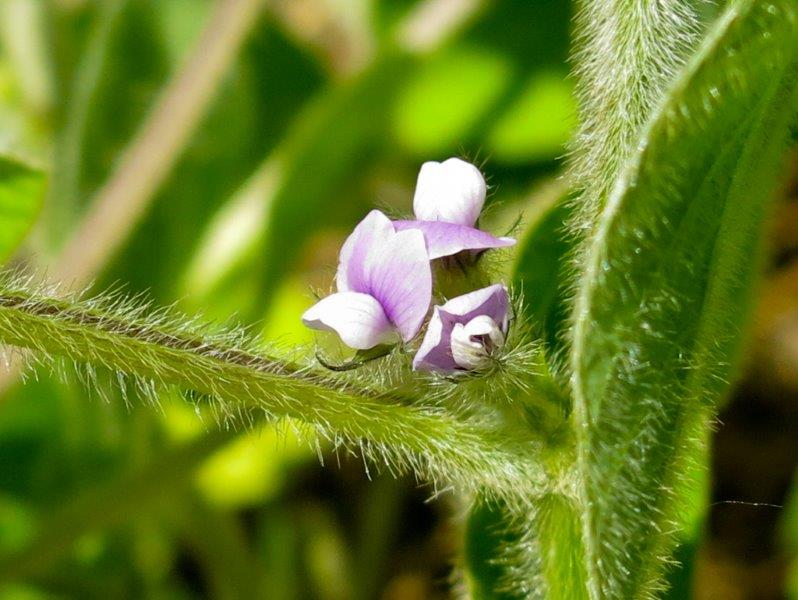
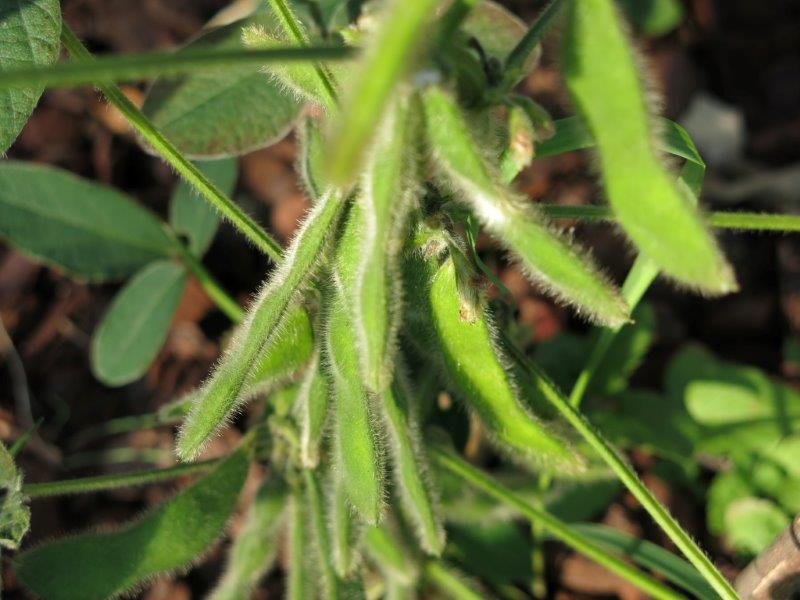
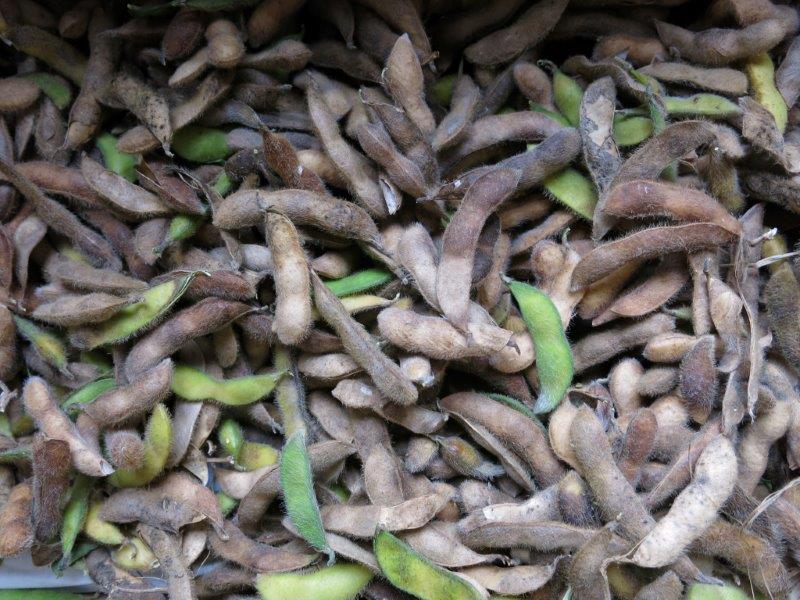
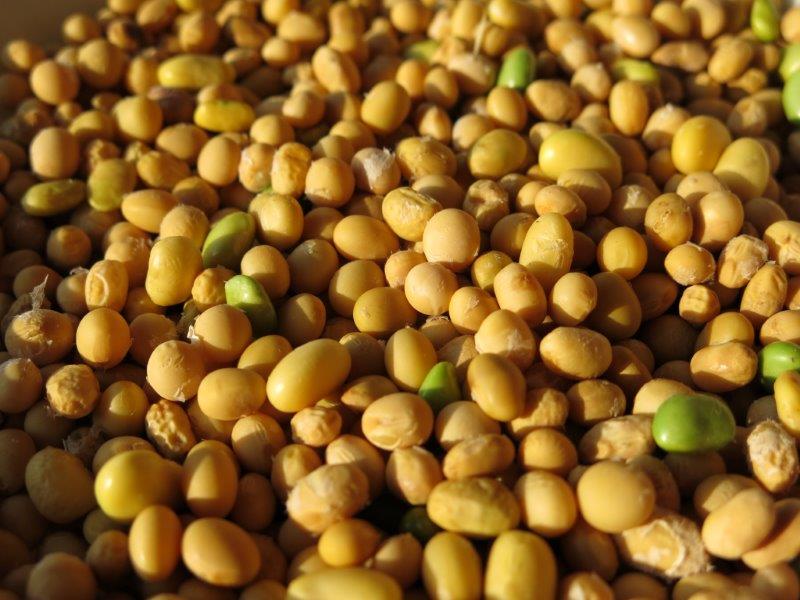
From left to right: 1) Detail of the flower during blooming (15 June), 2) Pods on the 7th of August, 3) Harvest at the end of September, 4) Cleaned seeds
Raised bed 8a: Amaranth (Amaranthus caudatus e Amaranthus hypochondriacus)
Seedlings of amaranth were transplanted in the raised bed at the end of May. Seedlings of Amaranthus hypochondriacus were produced from seeds in seed pots while those of Amaranthus caudatus were acquired from a nursery. Amaranth grew luxuriant. Its flower heads were harvested at the end of September but we were not able to thresh the seeds. Probably most of them had fallen before or during the harvest. But amaranth turned to be a potential great addition to the food forest having attracted and hosted a large variety of insects. A large variety of spiders, numerous ladybugs, some hymenoptera nest, a mantis cocoon and other insects were all found among its leaves and flowers heads. Next year it will be planted in the fruit trees guilds rather then in the raised bed, with the intention to also leave the plants on place after the growing season to allow insects to complete their life cycles and overwinter.
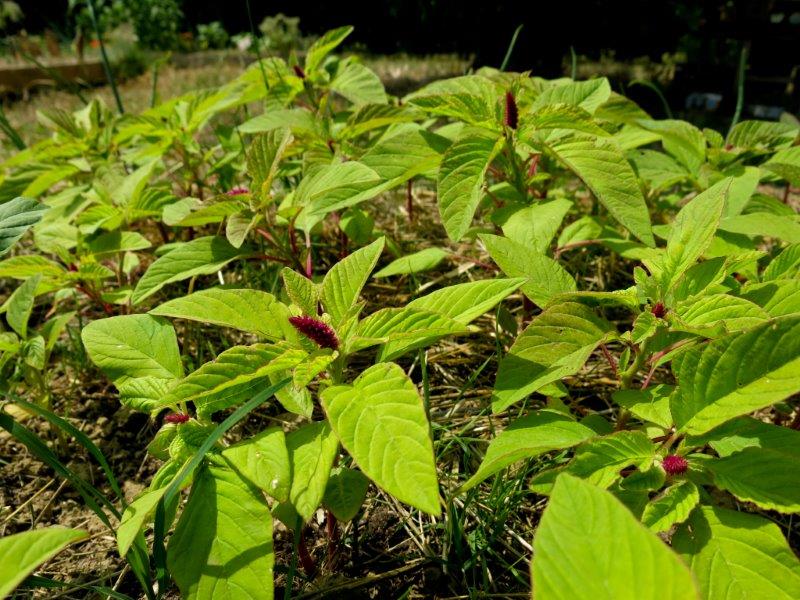
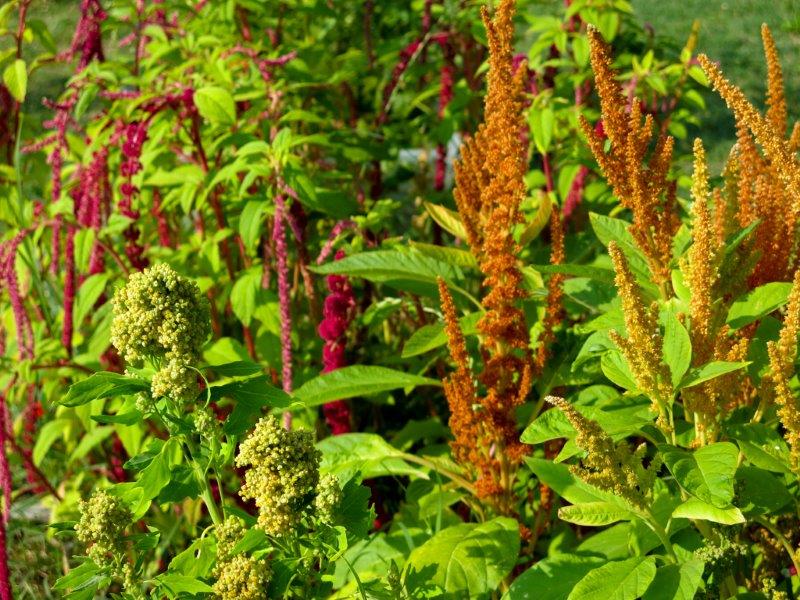
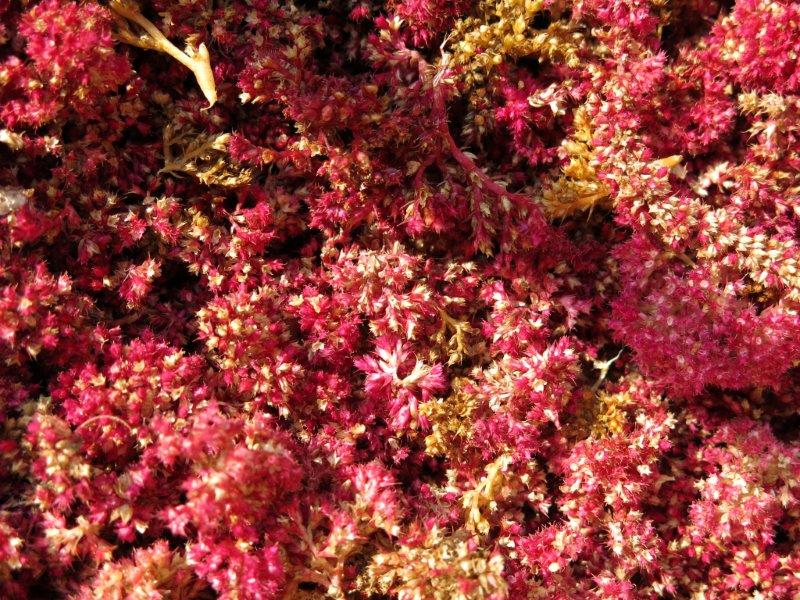
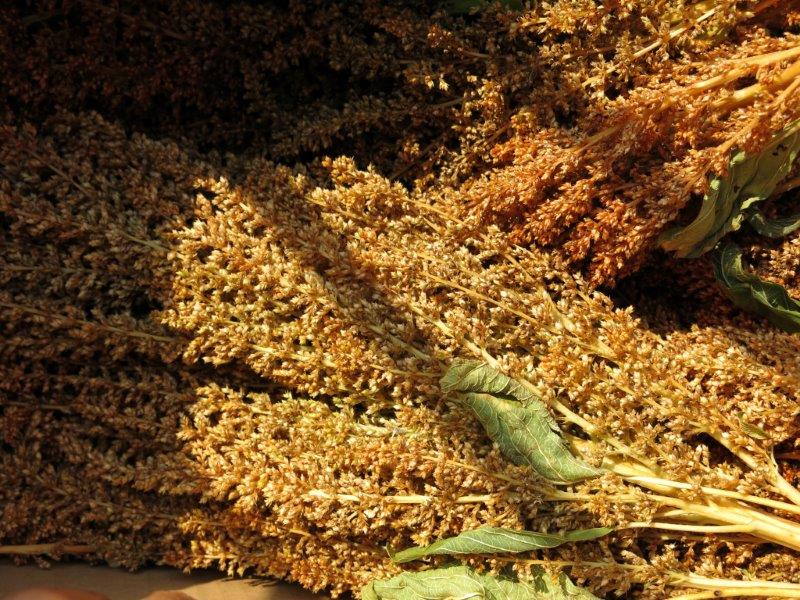
From left to right: 1) Young plants (7 June), 2) Blooming plants on the 25th of July, 3) Harvested flower heads of Amaranthus caudatus, 4) Harvested flower heads of Amaranthus hypochondriacus
Raised bed 8b: Quinoa (Chenopodium quinoa)
Some quinoa seedlings (5-6) grown indoor from seeds were transplanted in the bed at the end of May. Most plants grew to a height of about 40 cm while a couple grew pver 80 cm. All plants developed a flowering head that went to seed but seeds were not harvested.
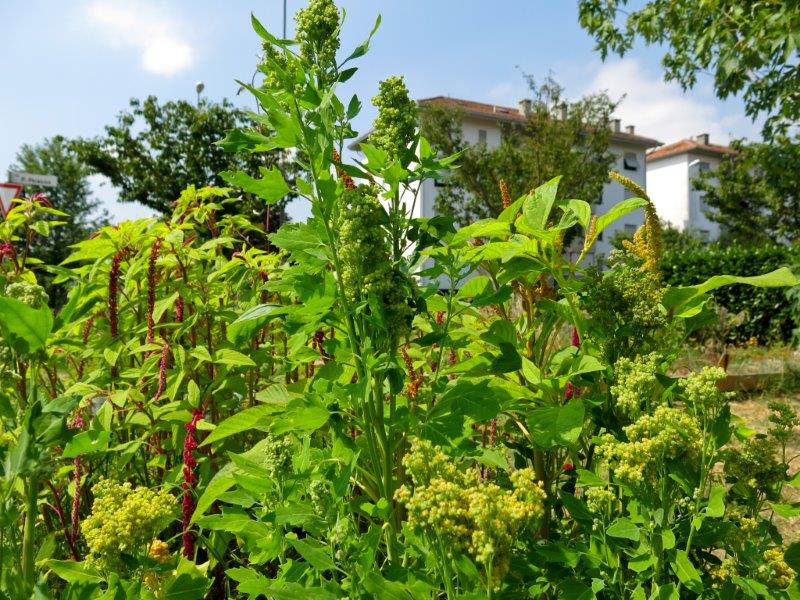
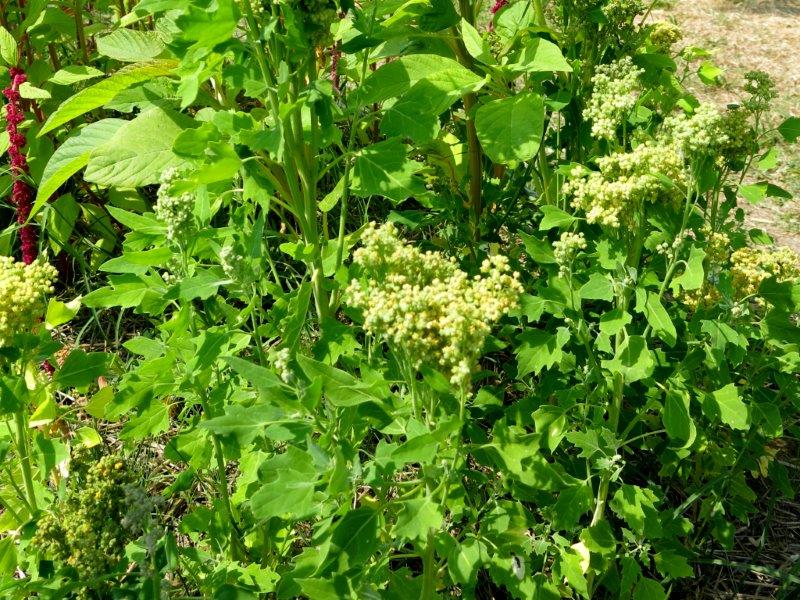
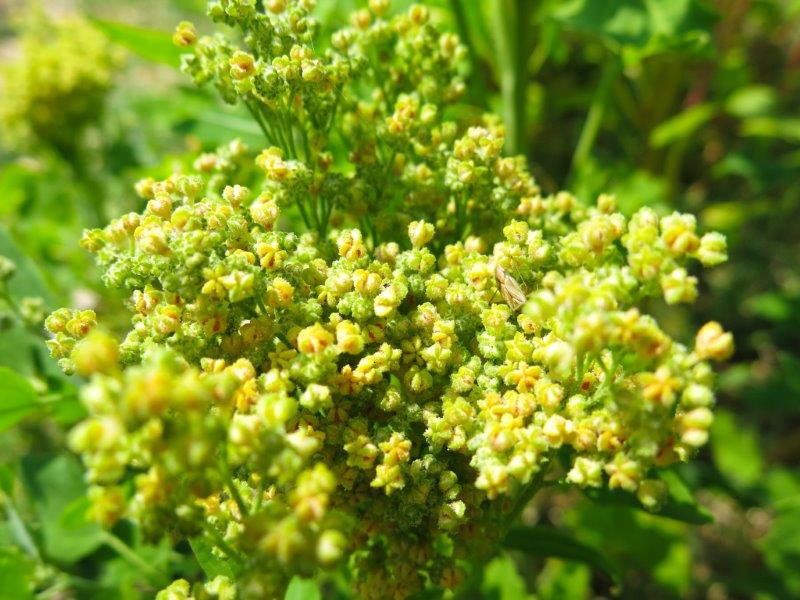
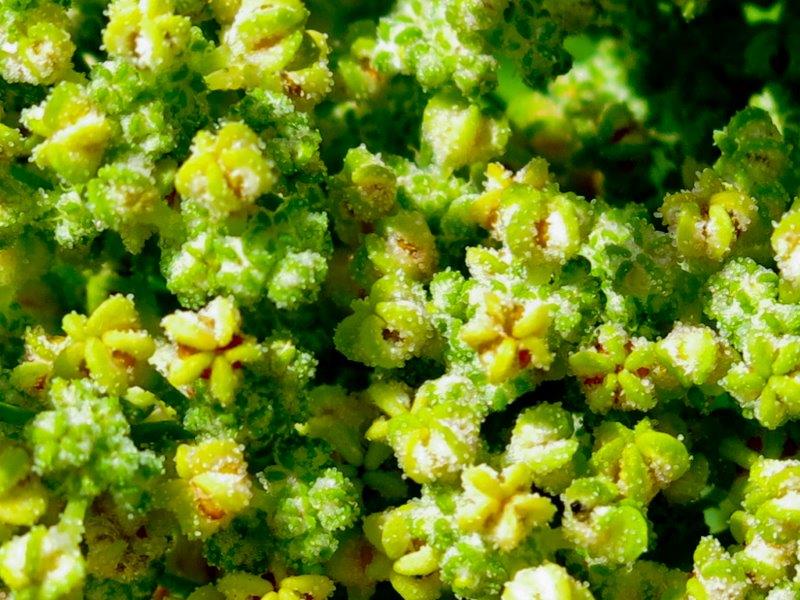
From left to right: 1) e 2) Plants on the 6th of July, 3) e 4) Detail of the flower head
Raised bed 9a: Flax (Linum usatissimum)
The flax (variety to produce seeds not fibres) was sown broadcasted at the beginning of May. It is among the trials that worked out best. Seeds sprouted and plants grew with no issues up to 30cm height producing a beautiful flower display and numerous seed pods. Seed pods were harvested on the 2nd of August. Each pod contained 6 seeds.
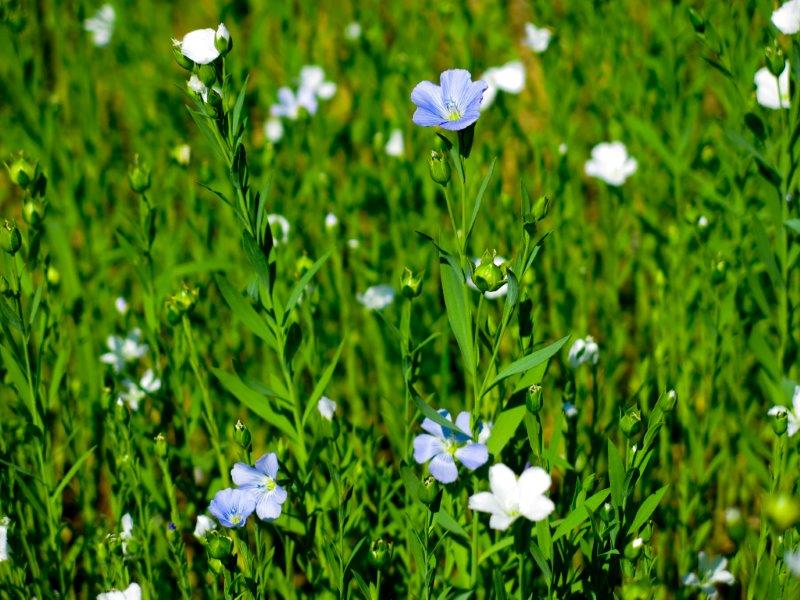
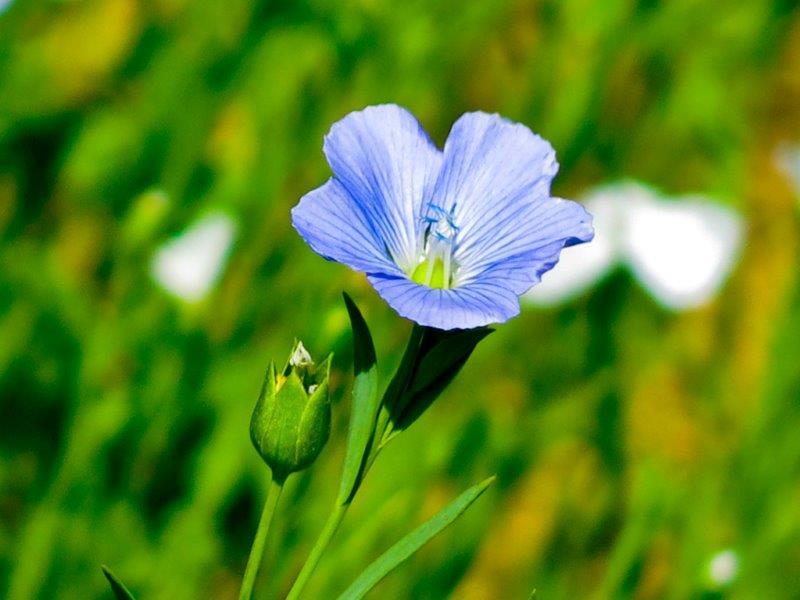
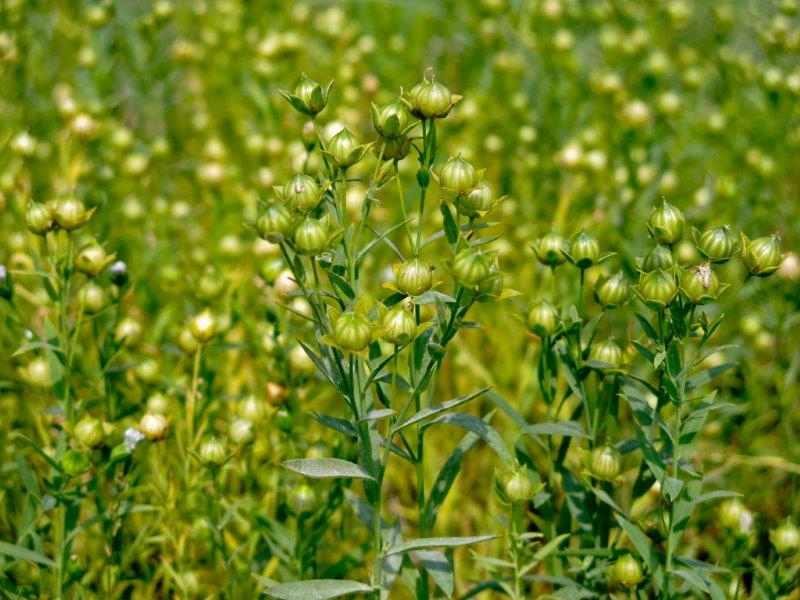
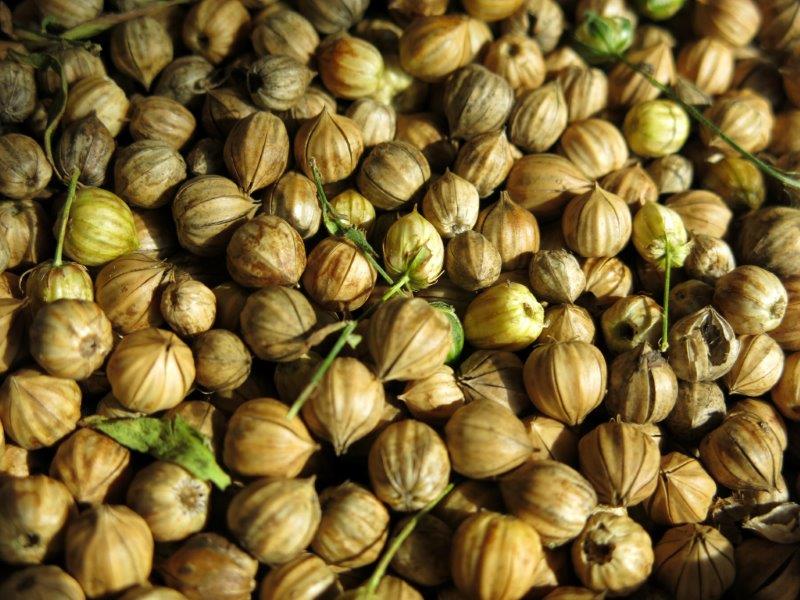
From left to right: 1) Plants blooming on the 7th of June, 2) Detail of the flower, 3) Unripe seed pods on the 6th of July, 4) Seed pods harvested on the 2nd of August
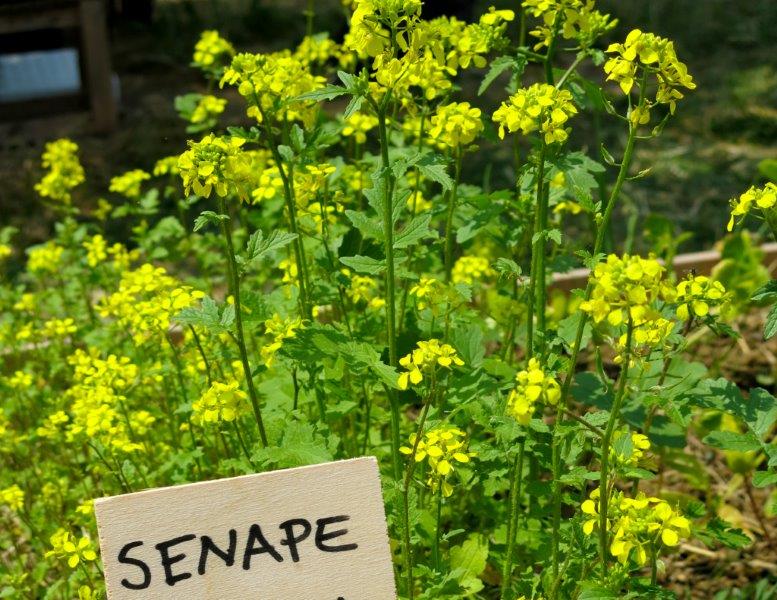
Bancale 9b: White mustard (Brassica alba)
Mustard was sown broadcasted at the beginning of May. Plants did not develop too well probably due to the continuous chewing performed by the slugs, but the blooming that took place at the beginning of June, was still abundant and colourful. Seeds were not harvested. At the end of the life cycle the plants were attacked by numerous pests giving probably a good start to the population of predators before the other vegetables went into production.
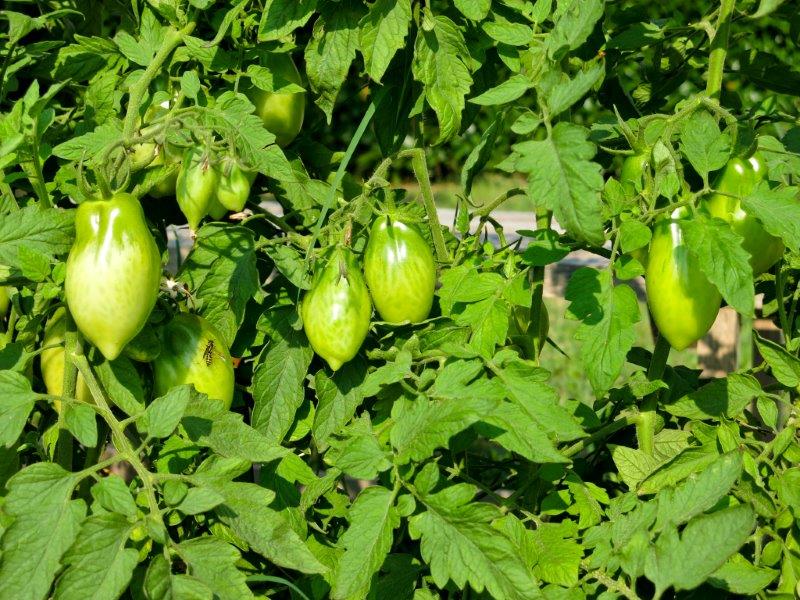
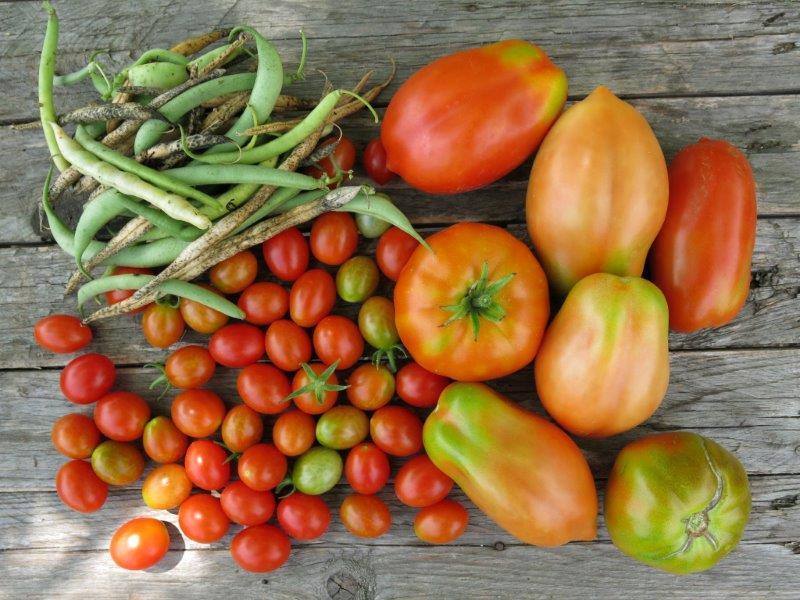
Raised bed 10: The classic vegetables with no chemical treatment (tomatoes, aubergines and peppers)
This raised bed hosted tomatoes, basil, peppers and aubergines. Likely planting all the Solanaceae plants in the same bed was not the best choice but it was last bed available and we had some plants offered that needed a home. We believe the plants were transplanted too early in the season (April) and they felt victims of low temperatures and slugs. When temperatures started to rise (second half of May) tomatoes started growing healthy and the eventually had a good production that continued through part of the fall. We do not have an estimate of the harvest as tomatoes were rightly sought after by the neighborhood inhabitants and shared among everybody. Peppers and aubergines did not take off, we believe mainly for the wrong planting time and slug damage. Also we remind that the bed was filled with soil from an excavation site thus it was very poor.
A 2 square meters area was dedicated to test the “no dig” cultivation of potatoes. The soil was not worked but covered by the following layers:
- A layer of cardboard laid directly on top of the grass
- A thin layer made by mixing 50l of mature manure with 50l of pot soil
- Another layer of cardboard in which cuts in the shape of a X were made at 20 cm of distance among them, to accommodated the seeding potatoes.
- A 20 cm deep layer of straw.
The plants were irrigated 2-3 times a week in July, less in August due to the holidays, and did not require any further maintenance. On the 30th of August the straw and the cardboard were removed and potatoes laid above the ground ready to be harvested. We harvested 6 Kg from an area of 2 square meters. The soil was soft and "worked out" by a large number of earth worms.
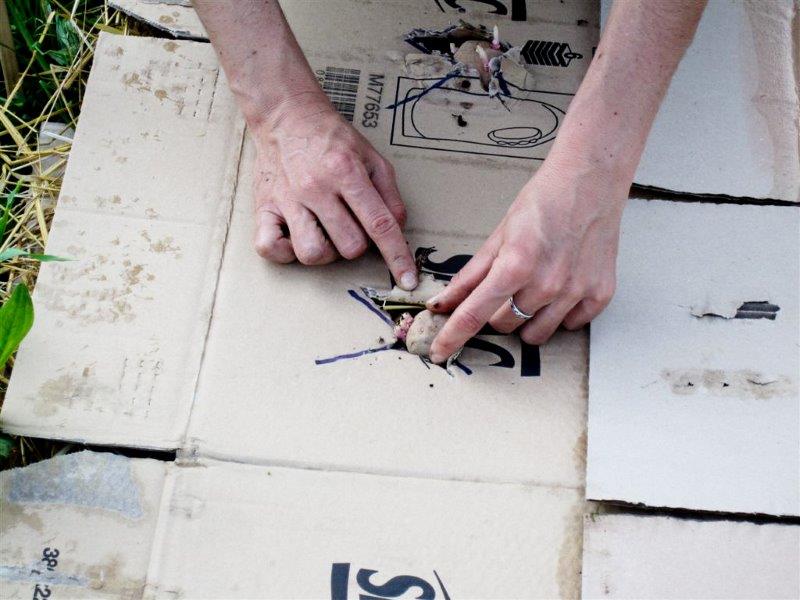
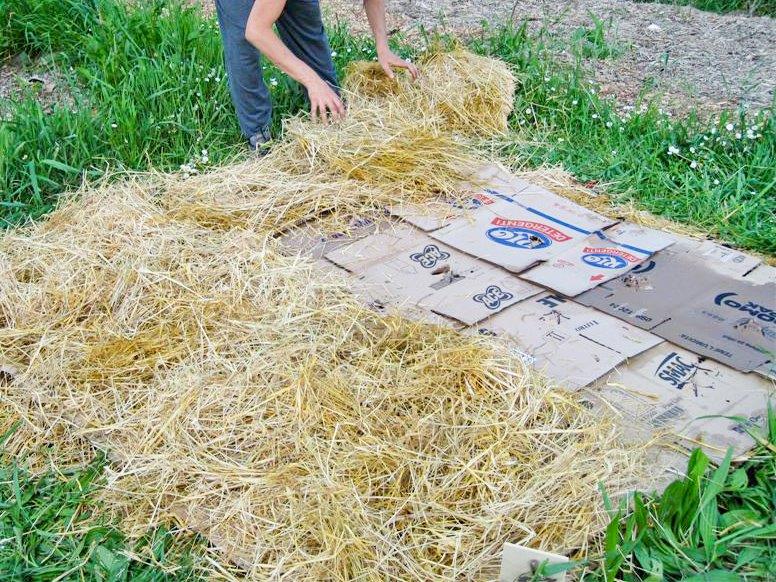
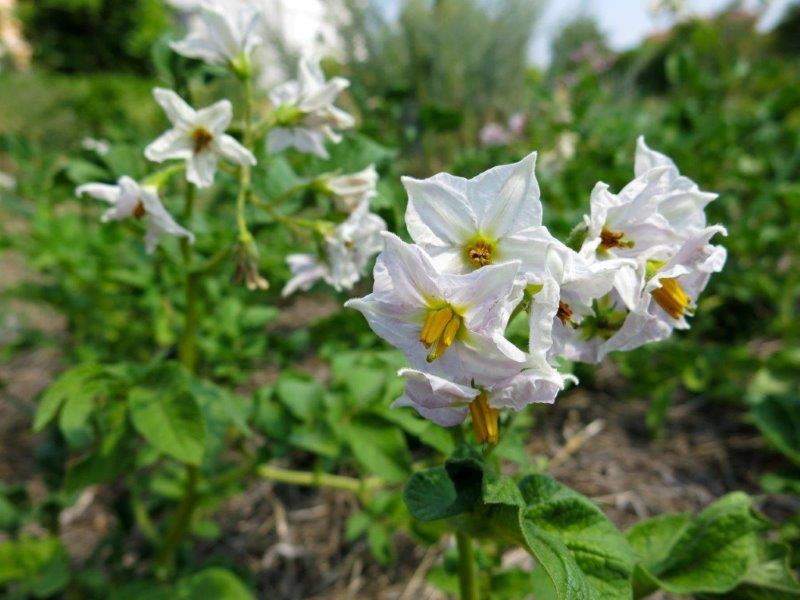
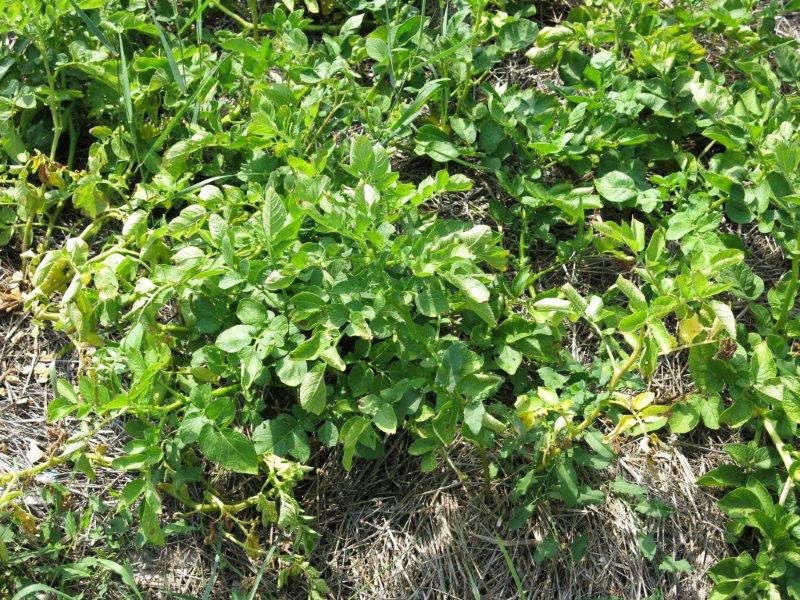
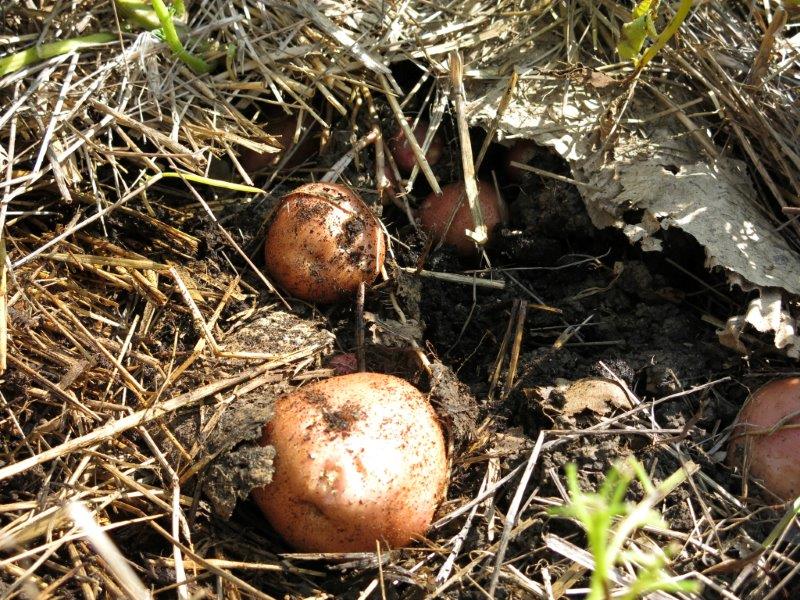
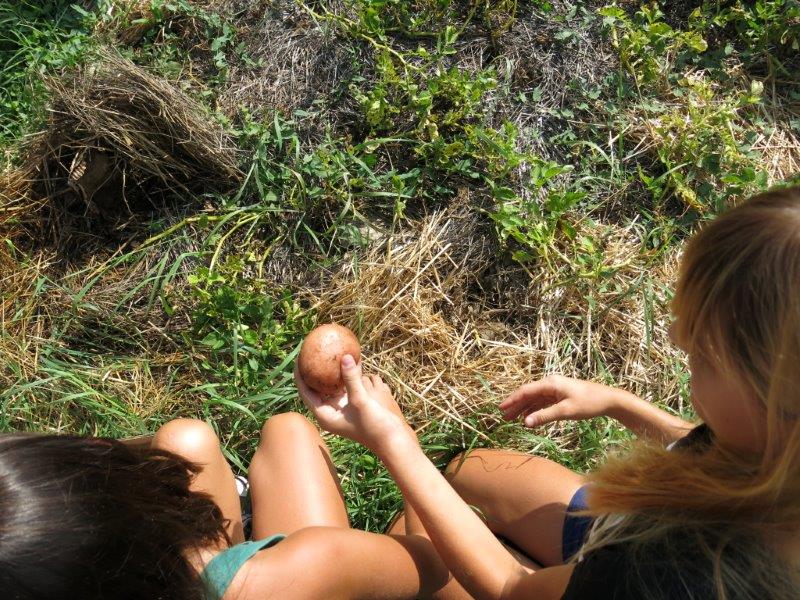
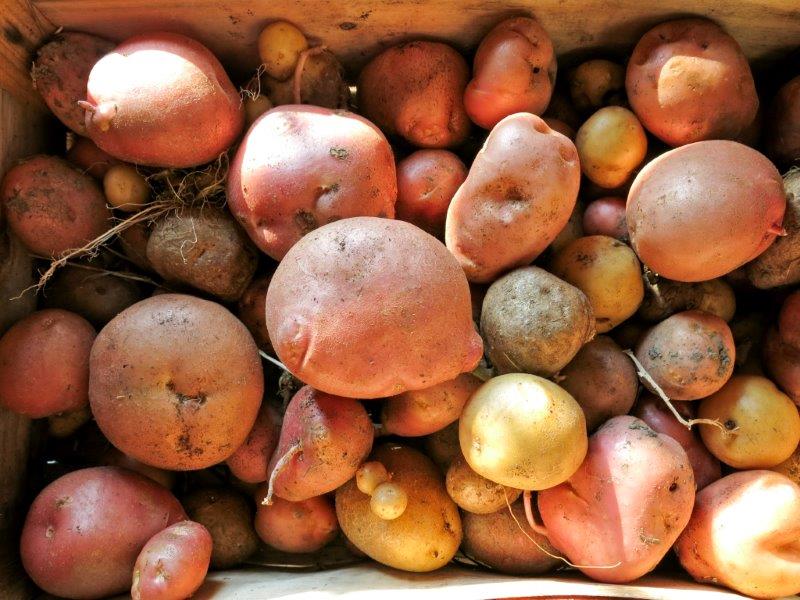
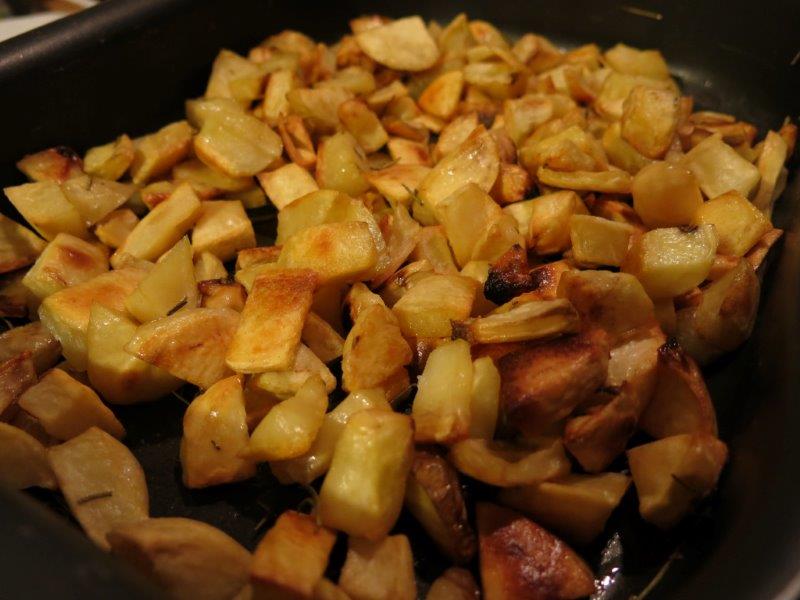
First row: 1) Planting of the potatoes on the 9th of April, 2) Mulching with straw, 3) Blooming(6th of July), 4) Plants on the 2nd of August 5) and 6) Harvest of the potatoes on the 30th of August, 7) Harvested potatoes (6 Kg), 8) Roasted potatoes!
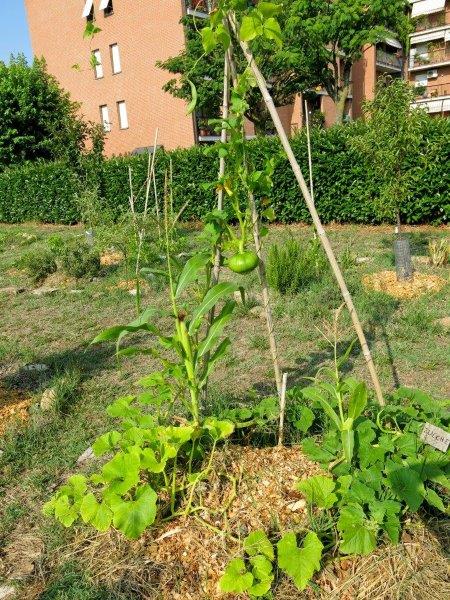
A small area among the young fruit trees was dedicated to experiment with a 2 meters hugelkultur bed created by partially burying at the depth of 15 cm some birch larger and smaller branches coming from the pruning of a town park.
The branches were then covered with a small amount of mature manure, the excavated dirt and additional dirt for a total cover of about 20cm.
The bed mound was then covered with cardboard (on the sides) and straw.
Three squash, two corns and a running bean plant were planted in the bed to imitate the “Three Sisters” traditional system used in Mexico where the corn provides climbing support to the running beans and the squash provides ground cover that regulates water evaporation and the spread of spontaneous grasses. Additional climbing support was provided by bamboo poles
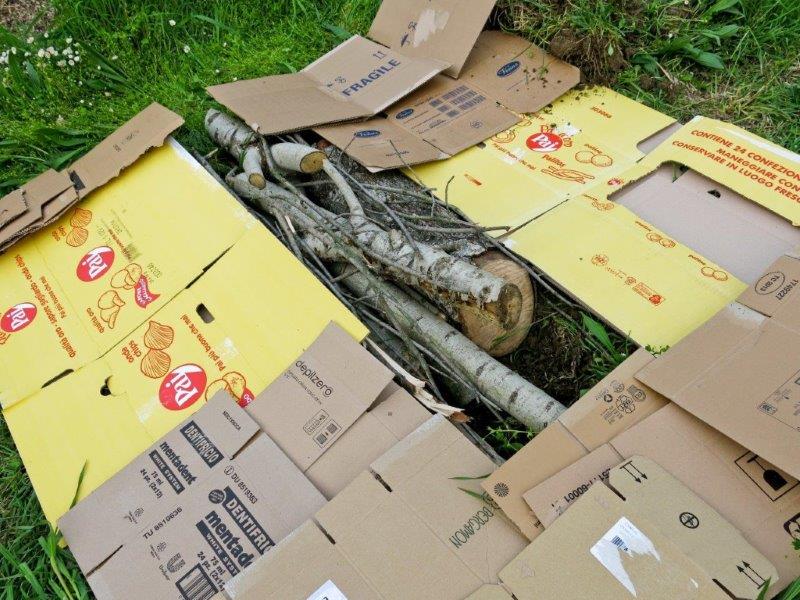
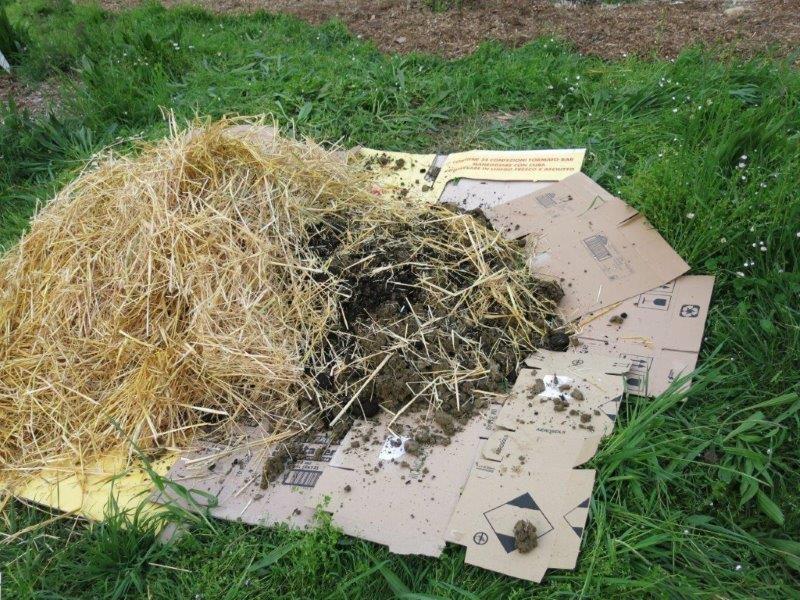
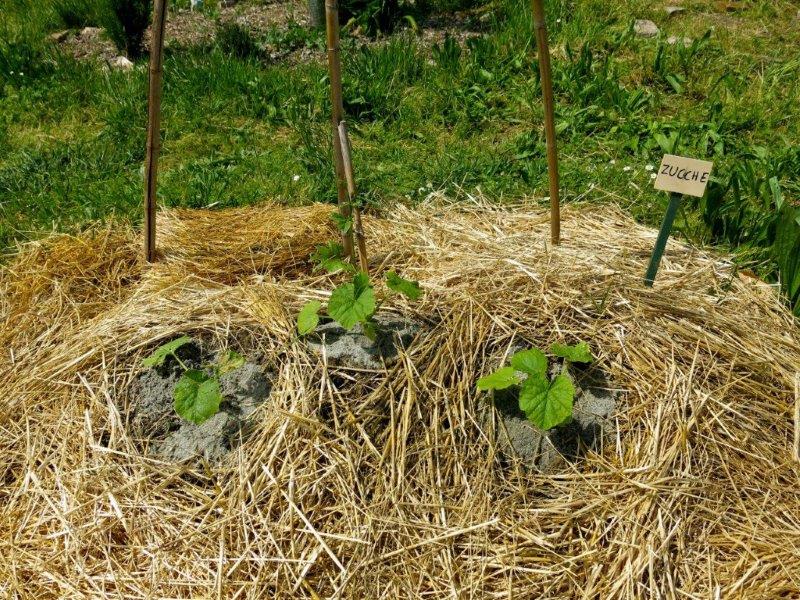
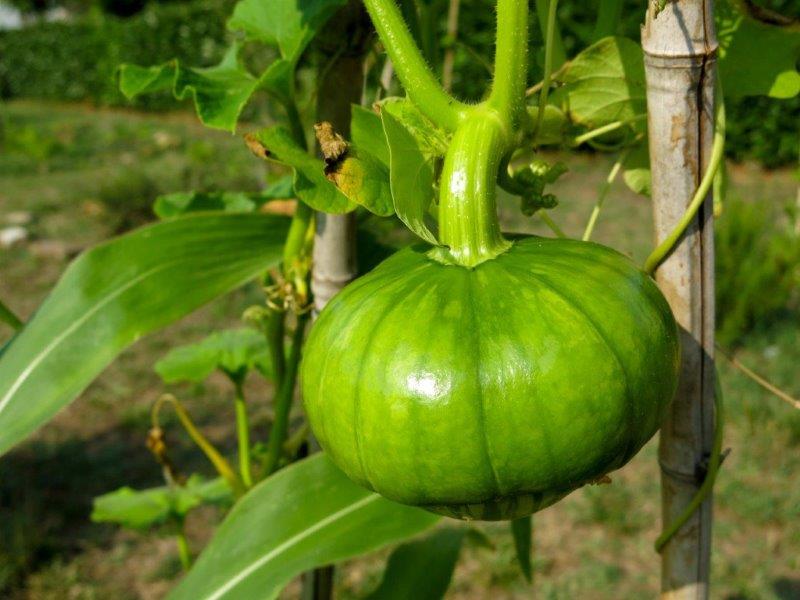
Shiitake mushrooms
Information will be made available soon.

